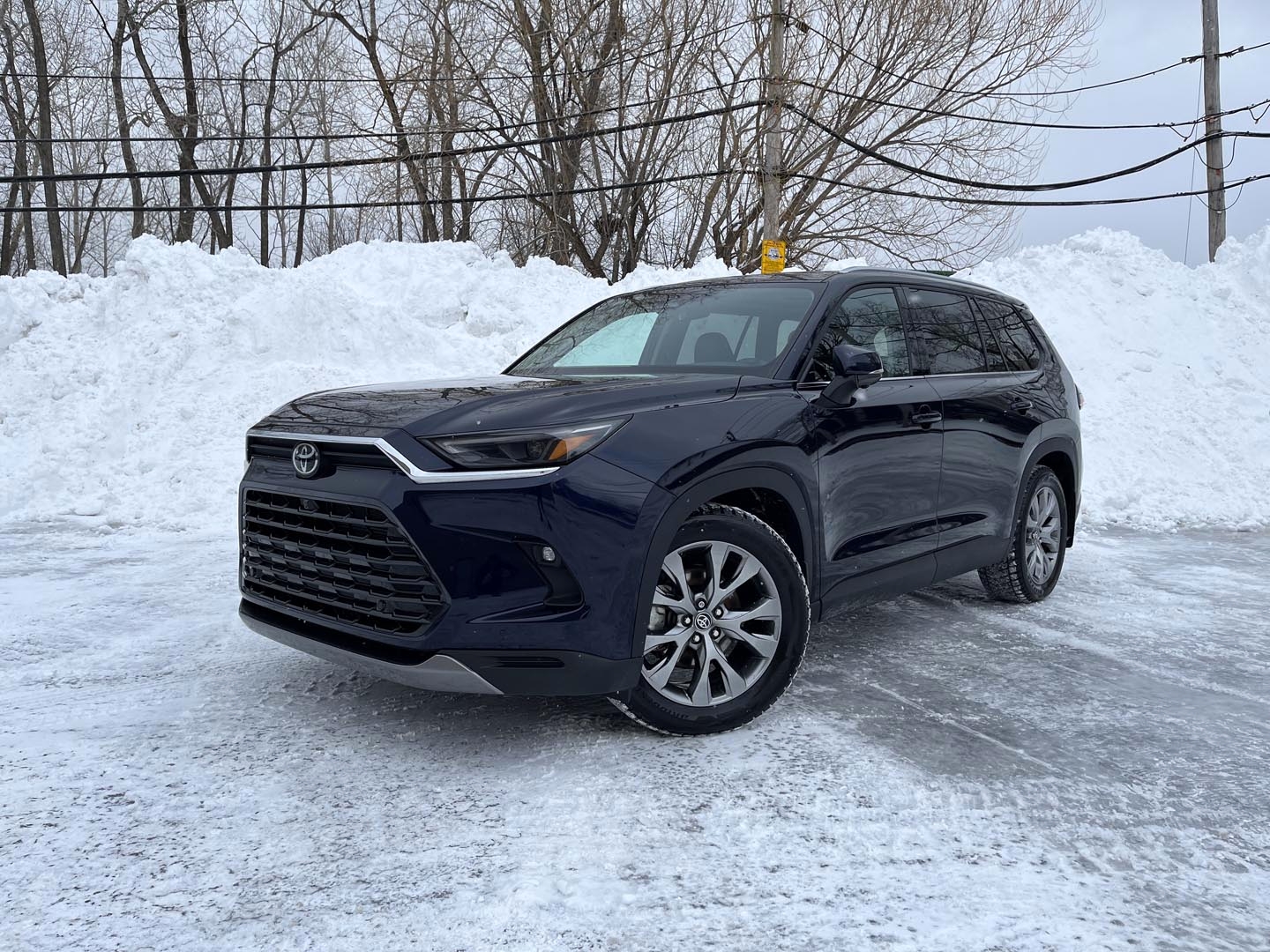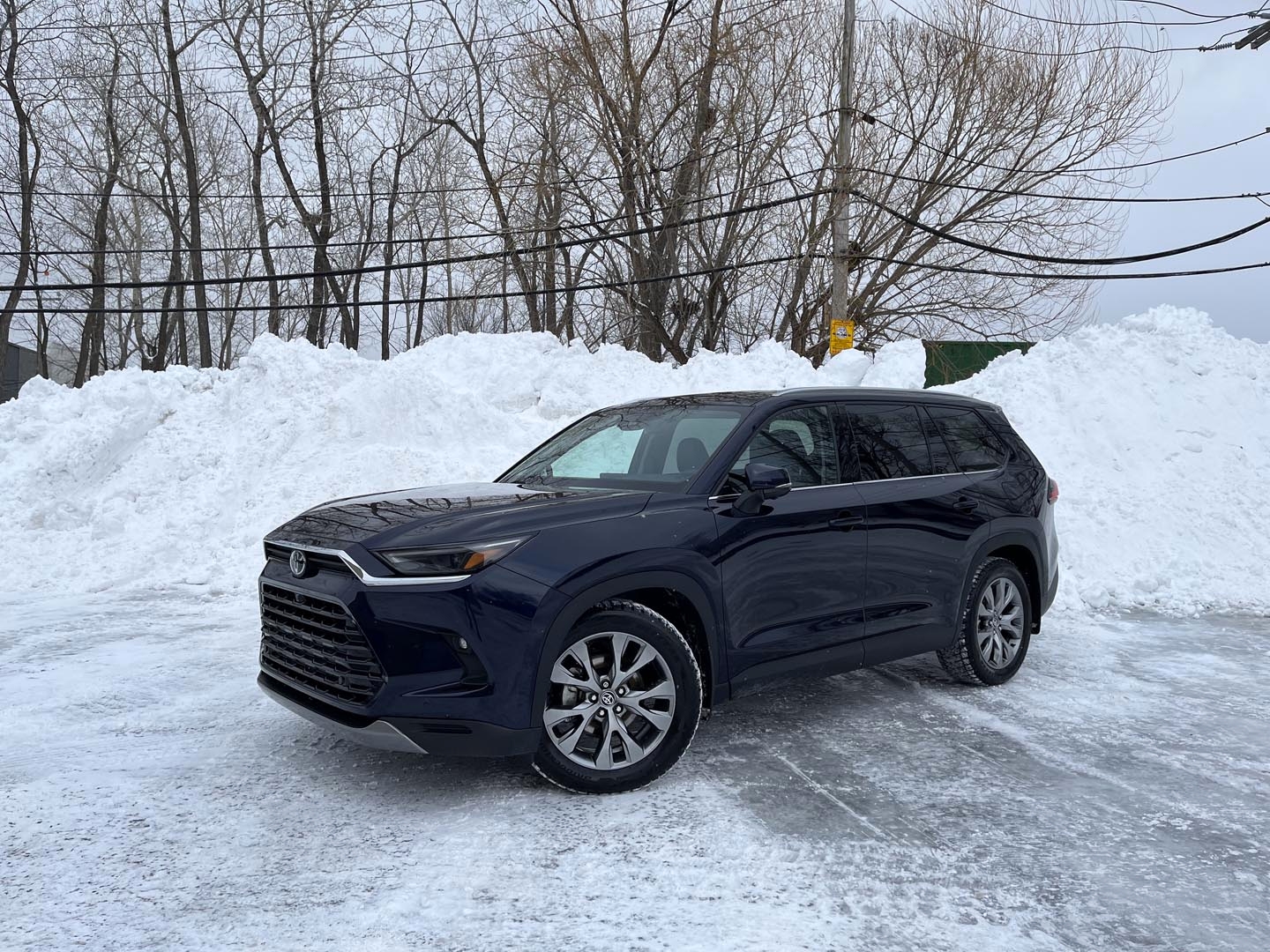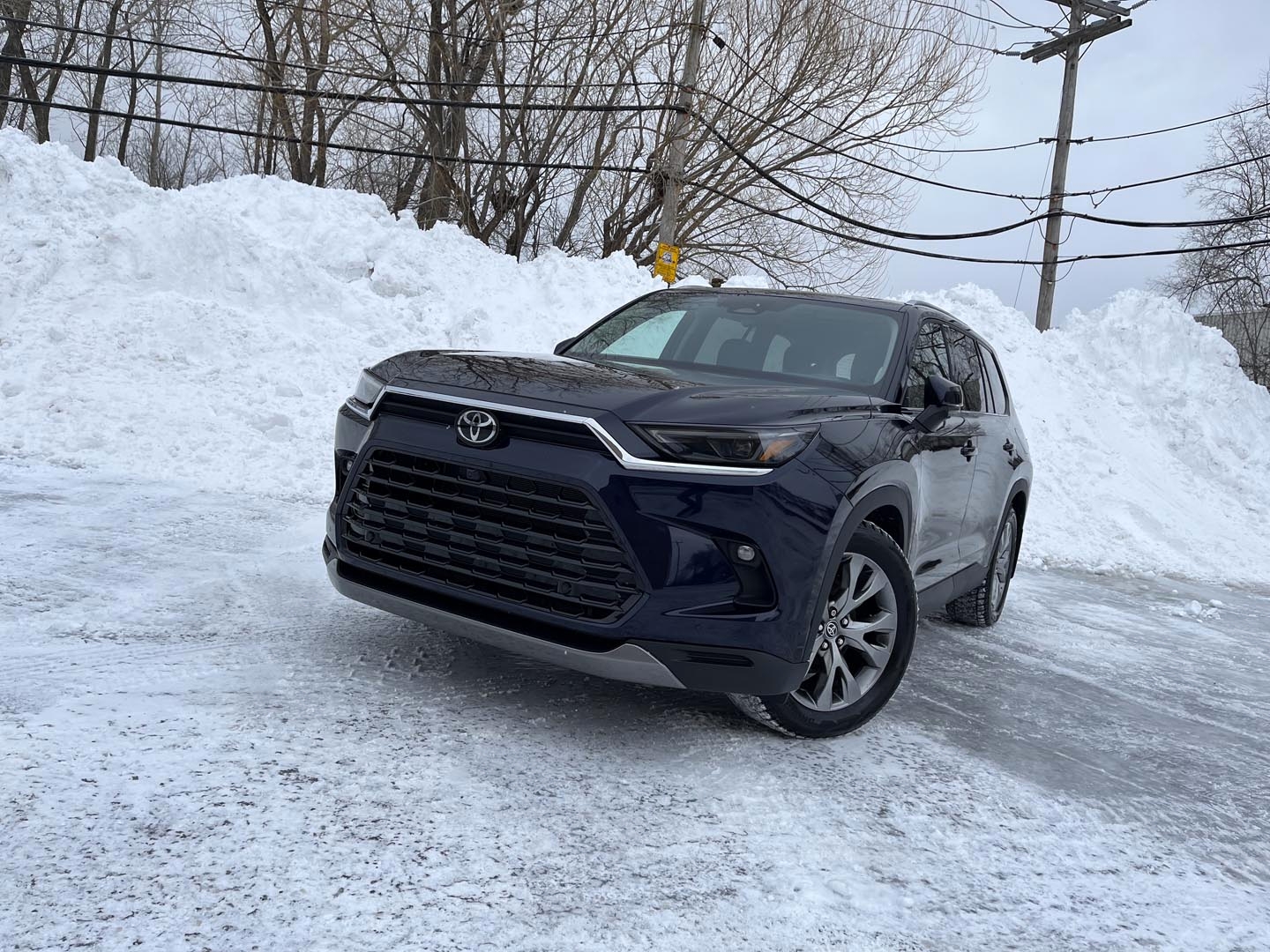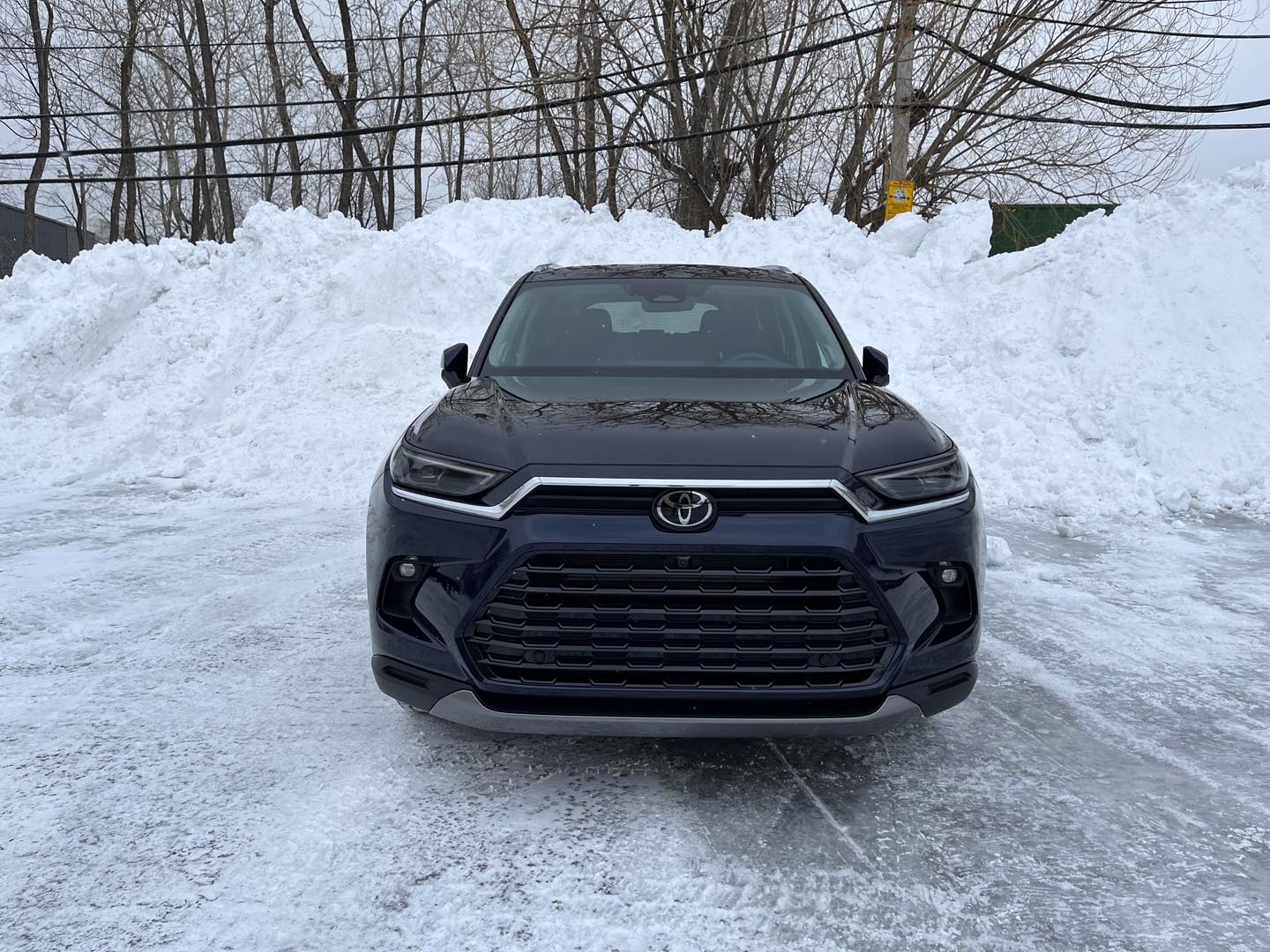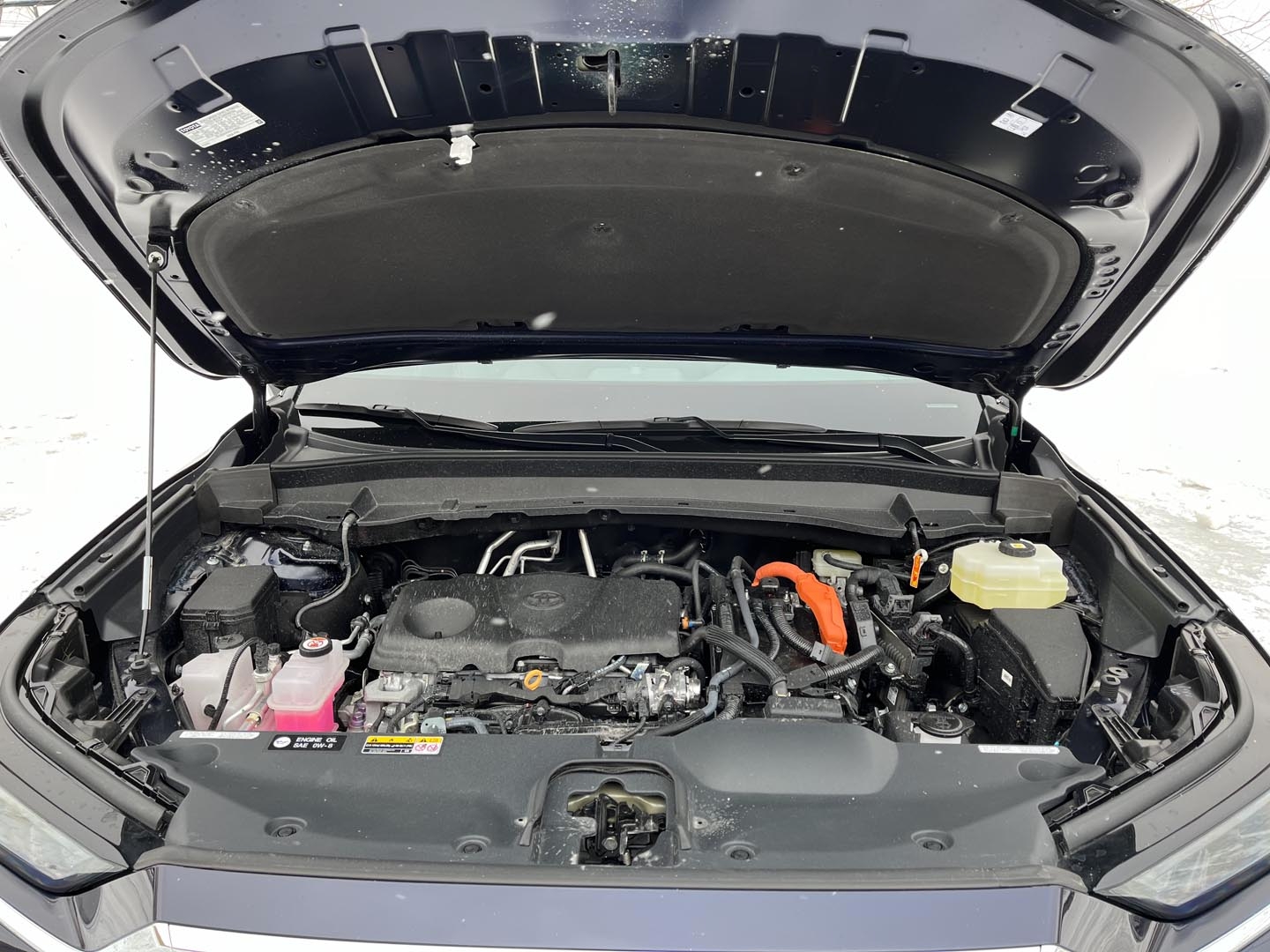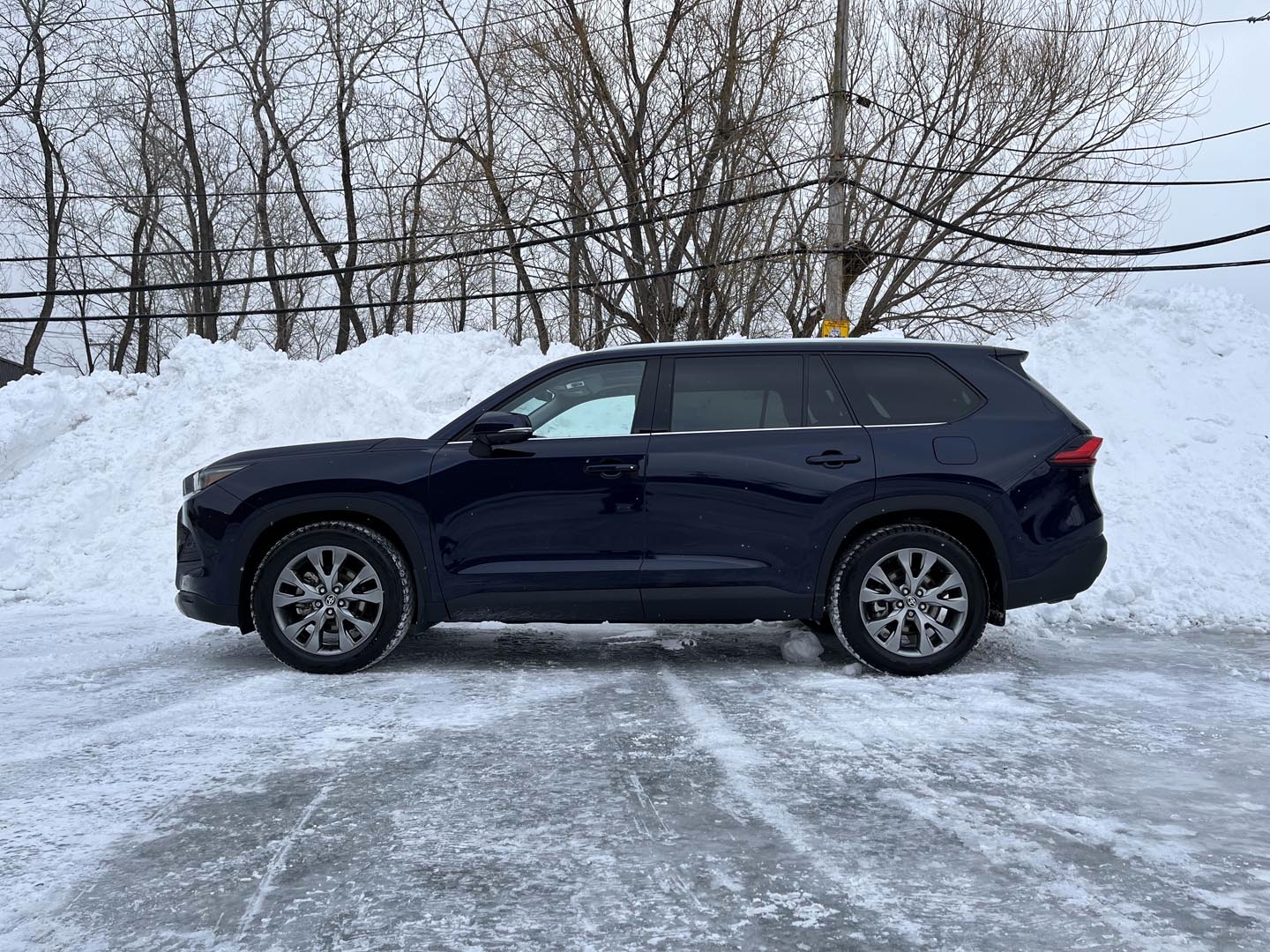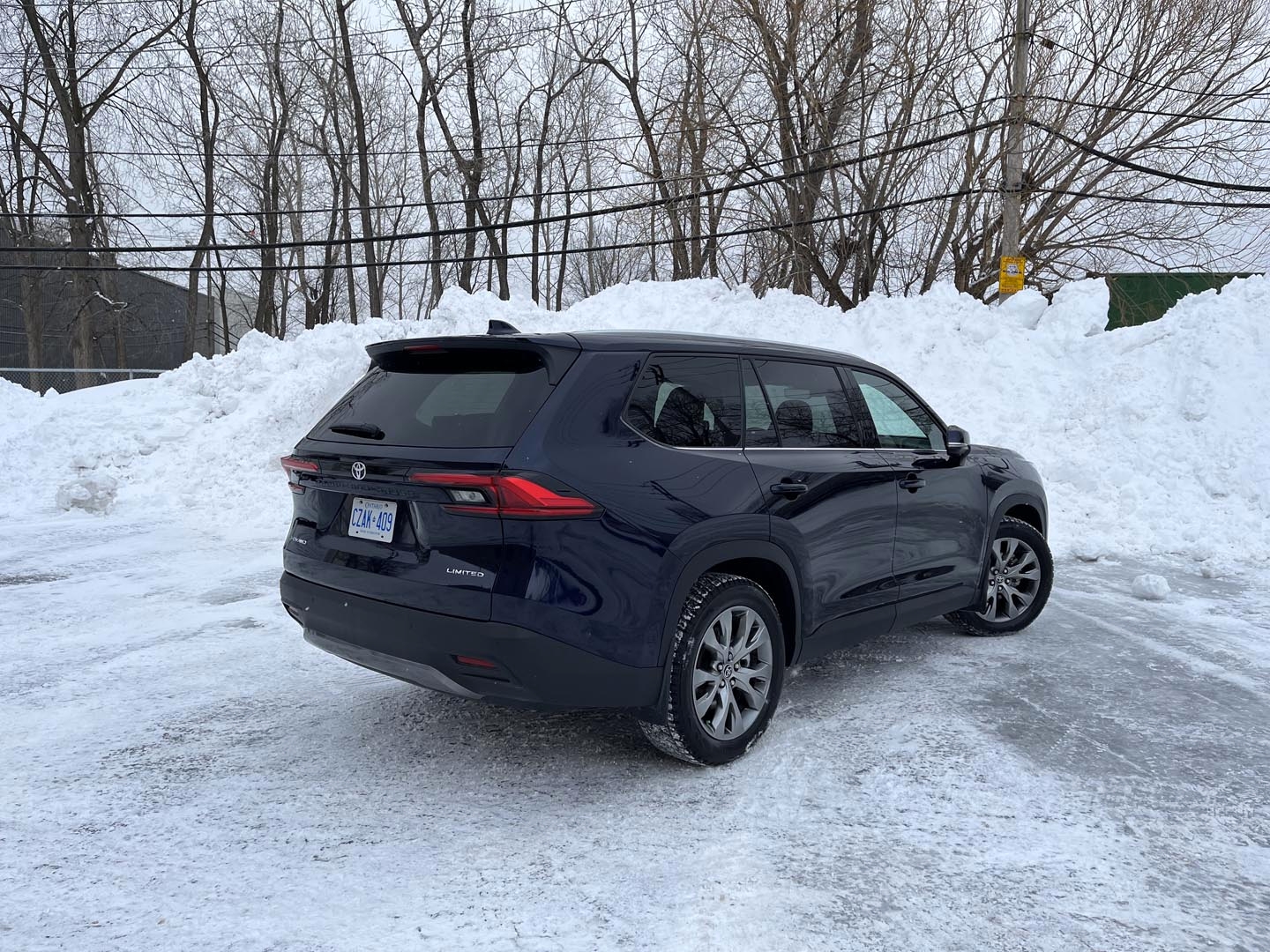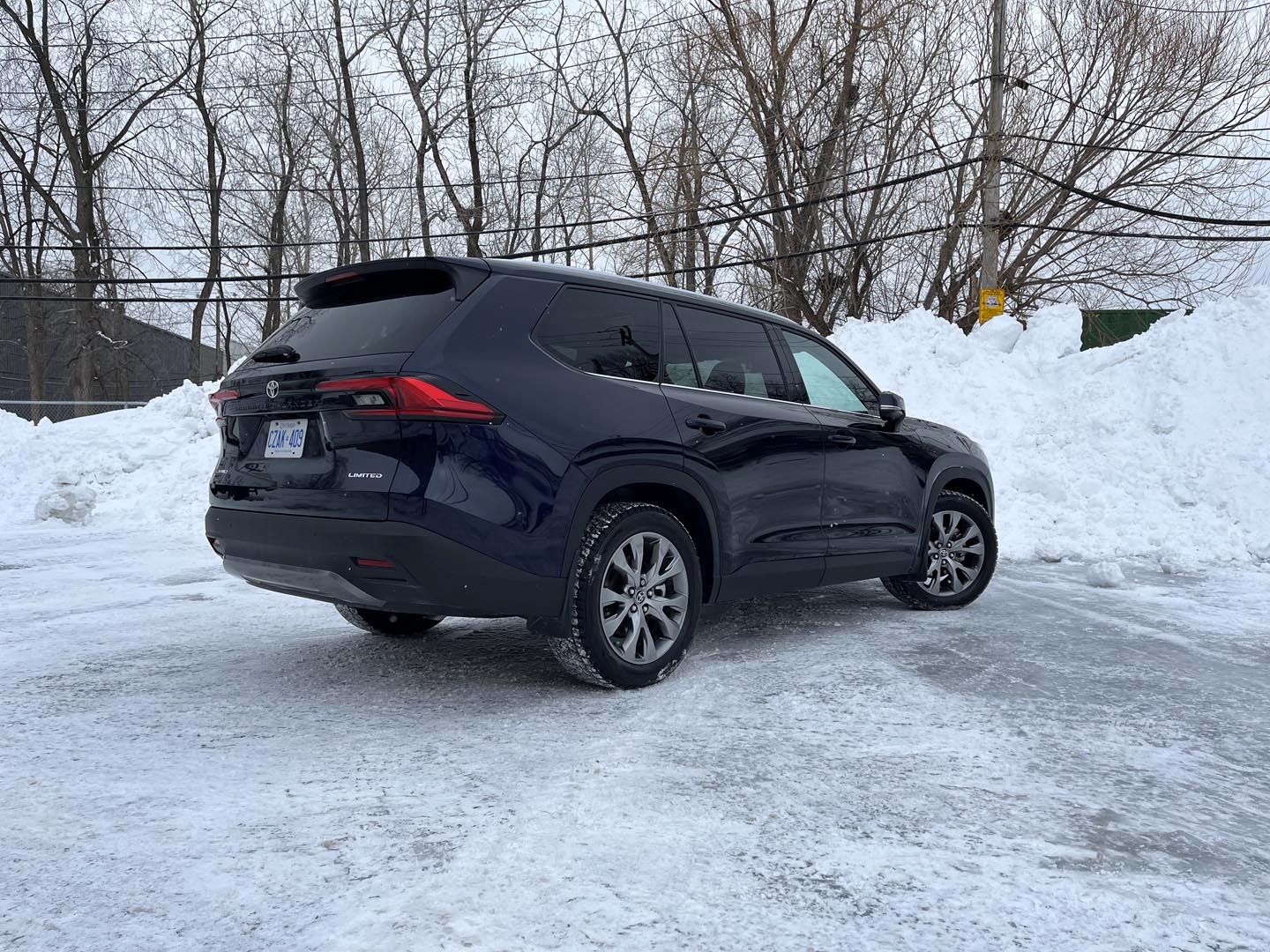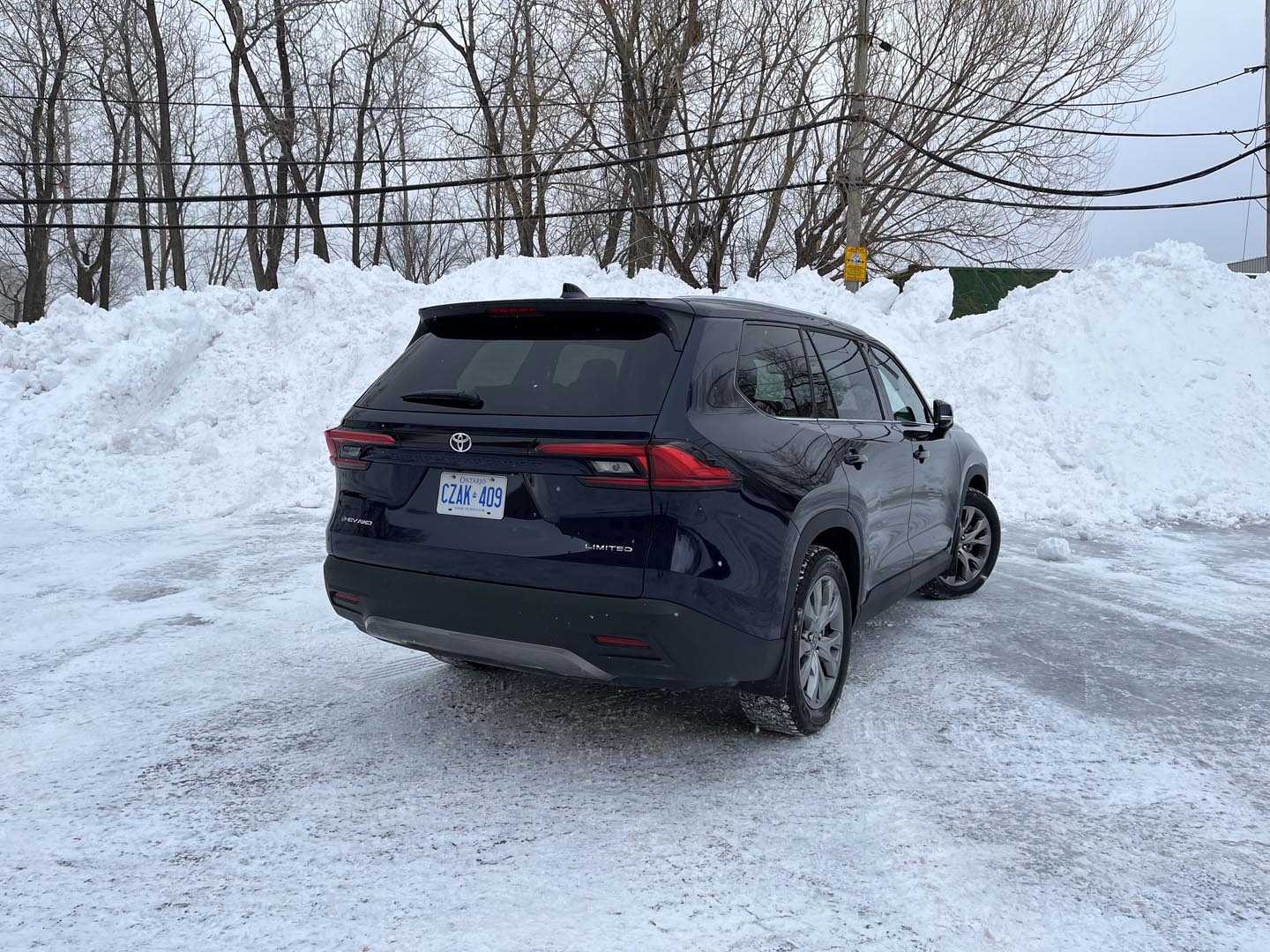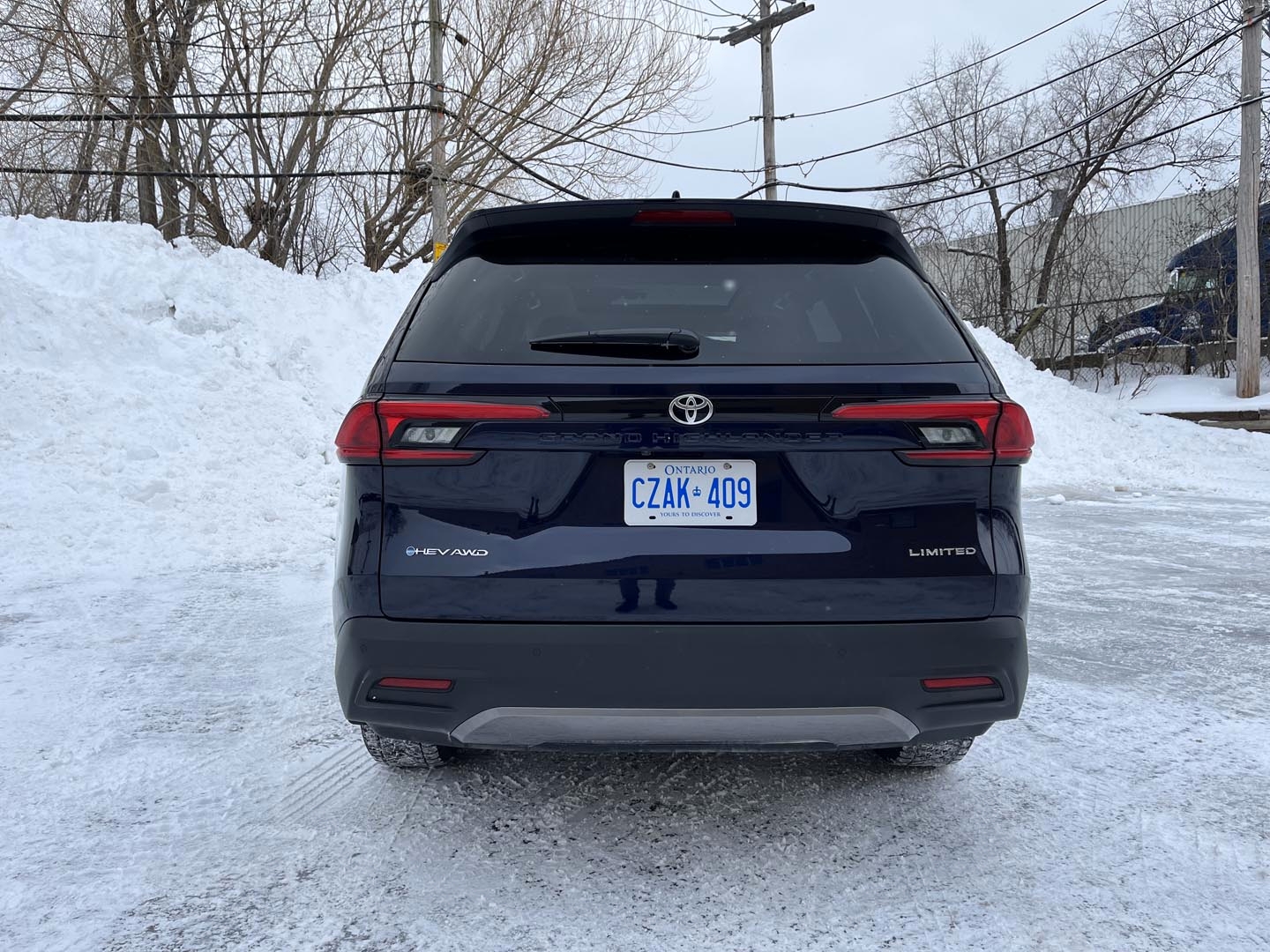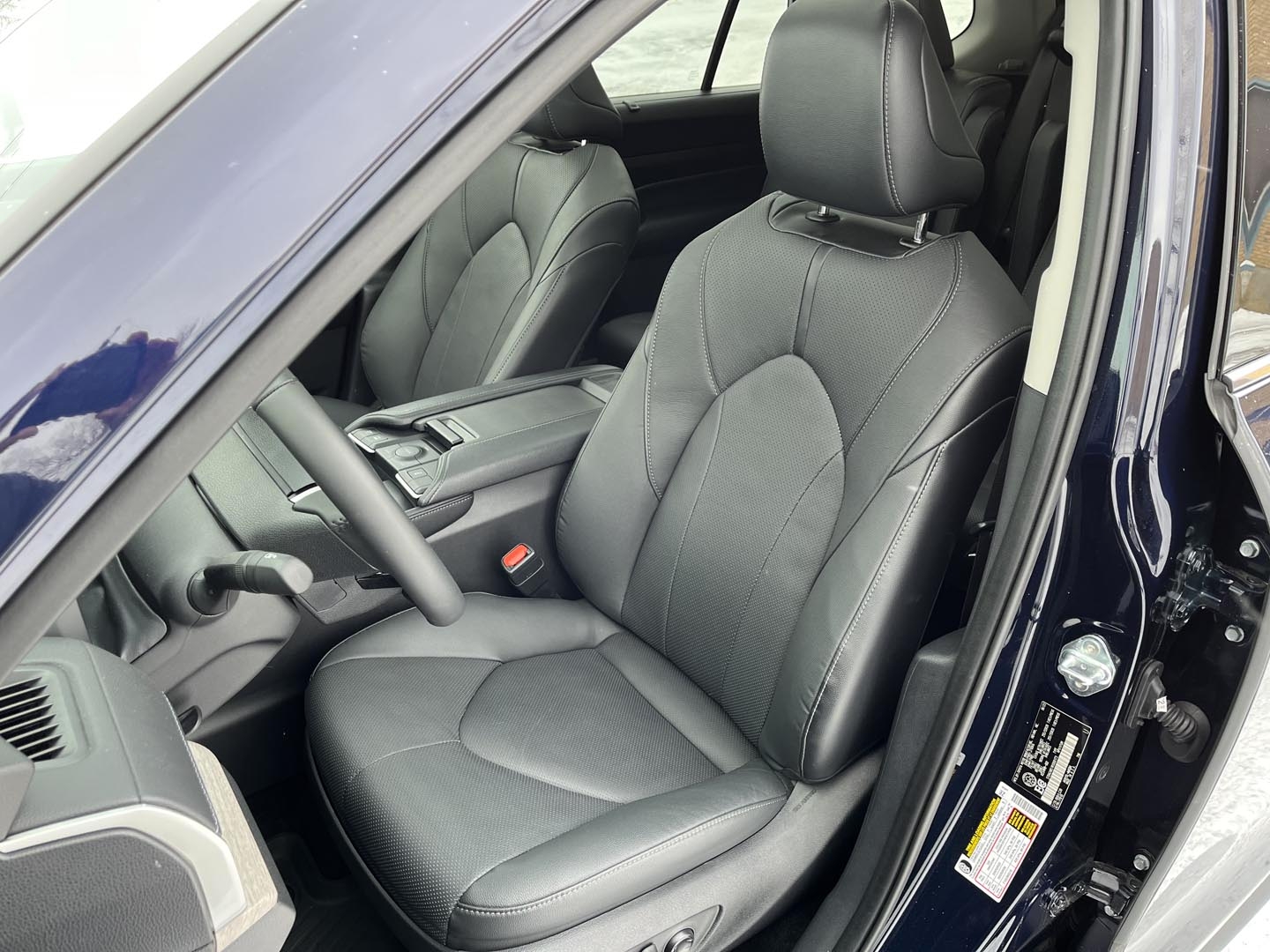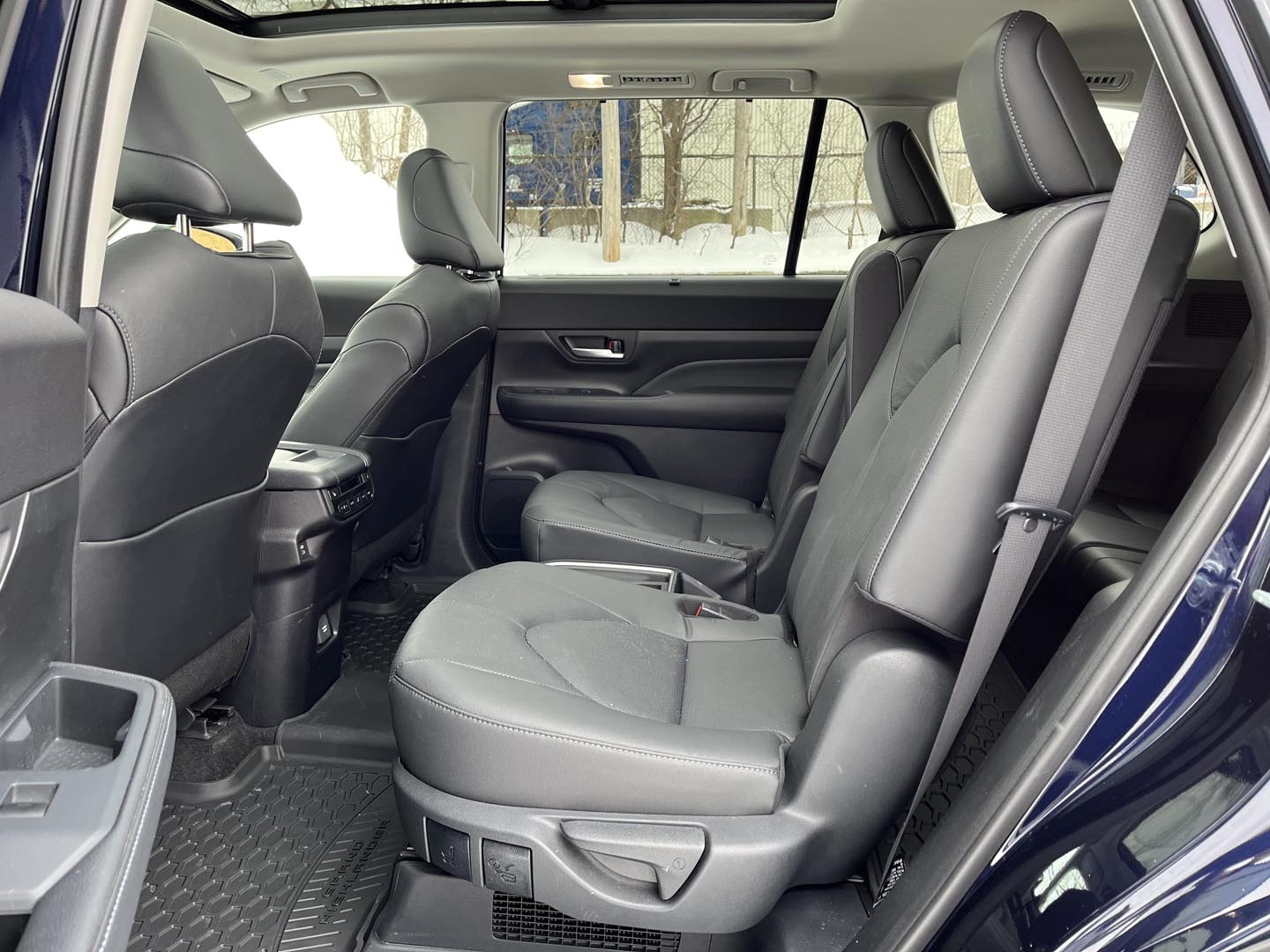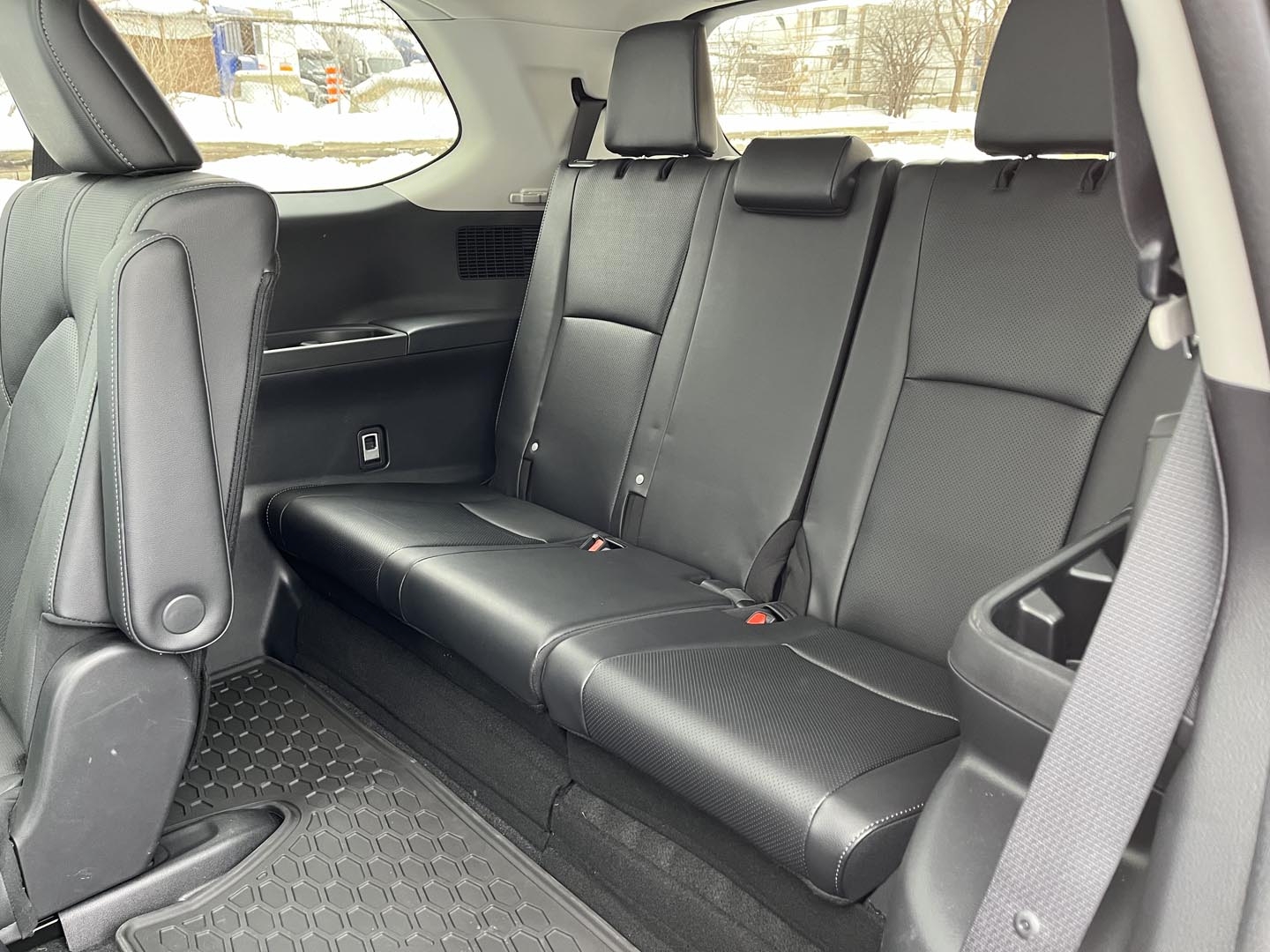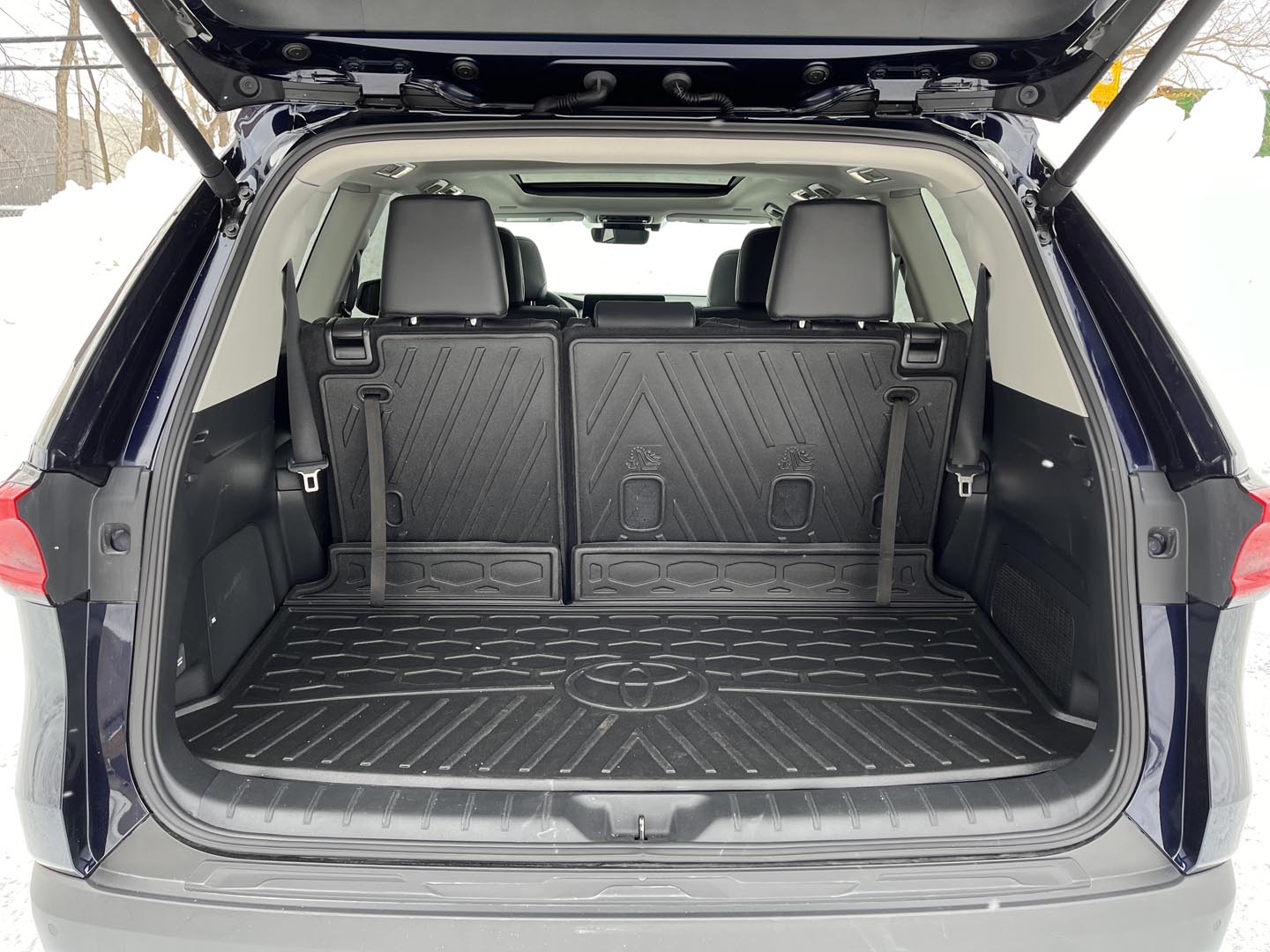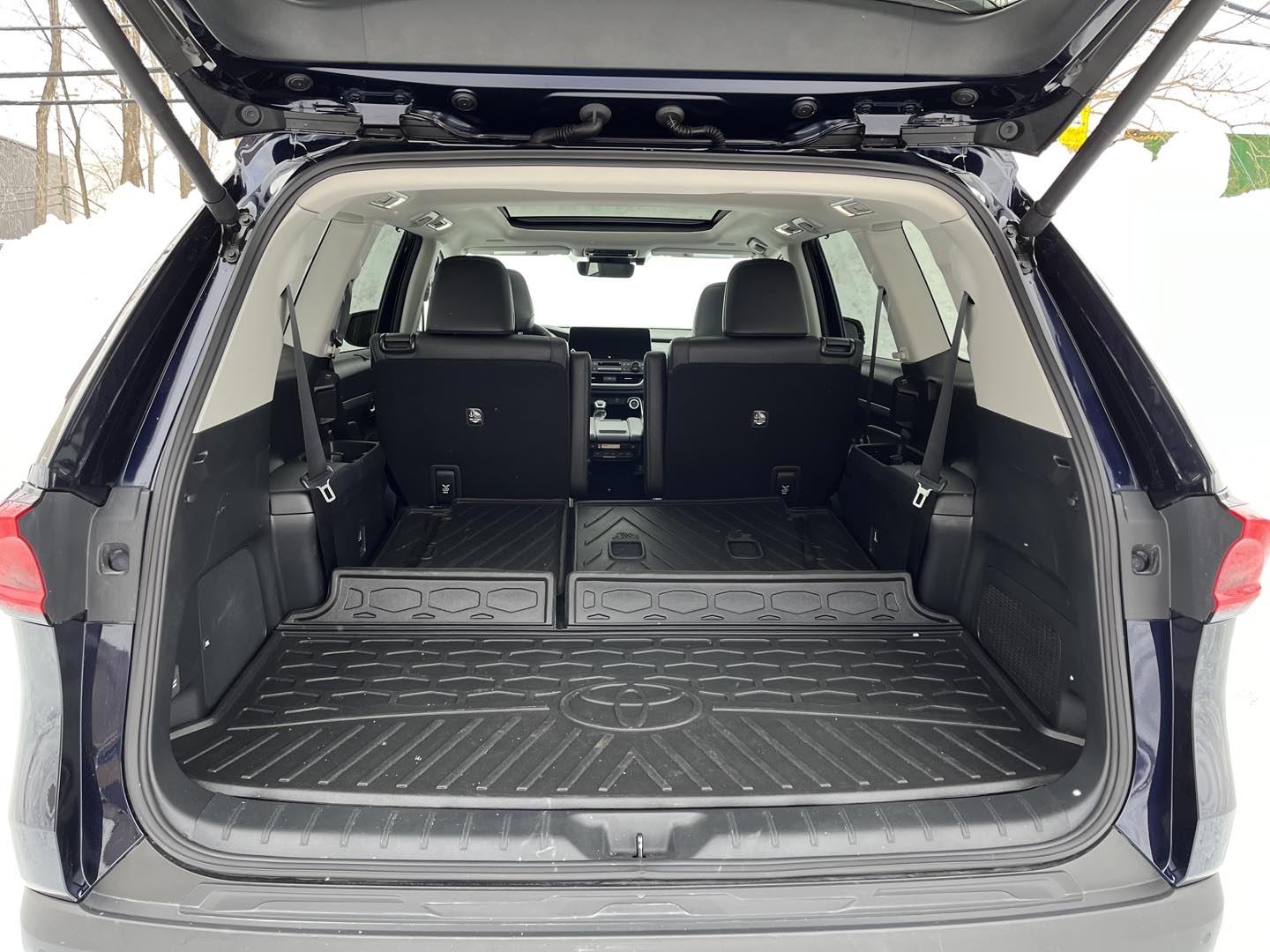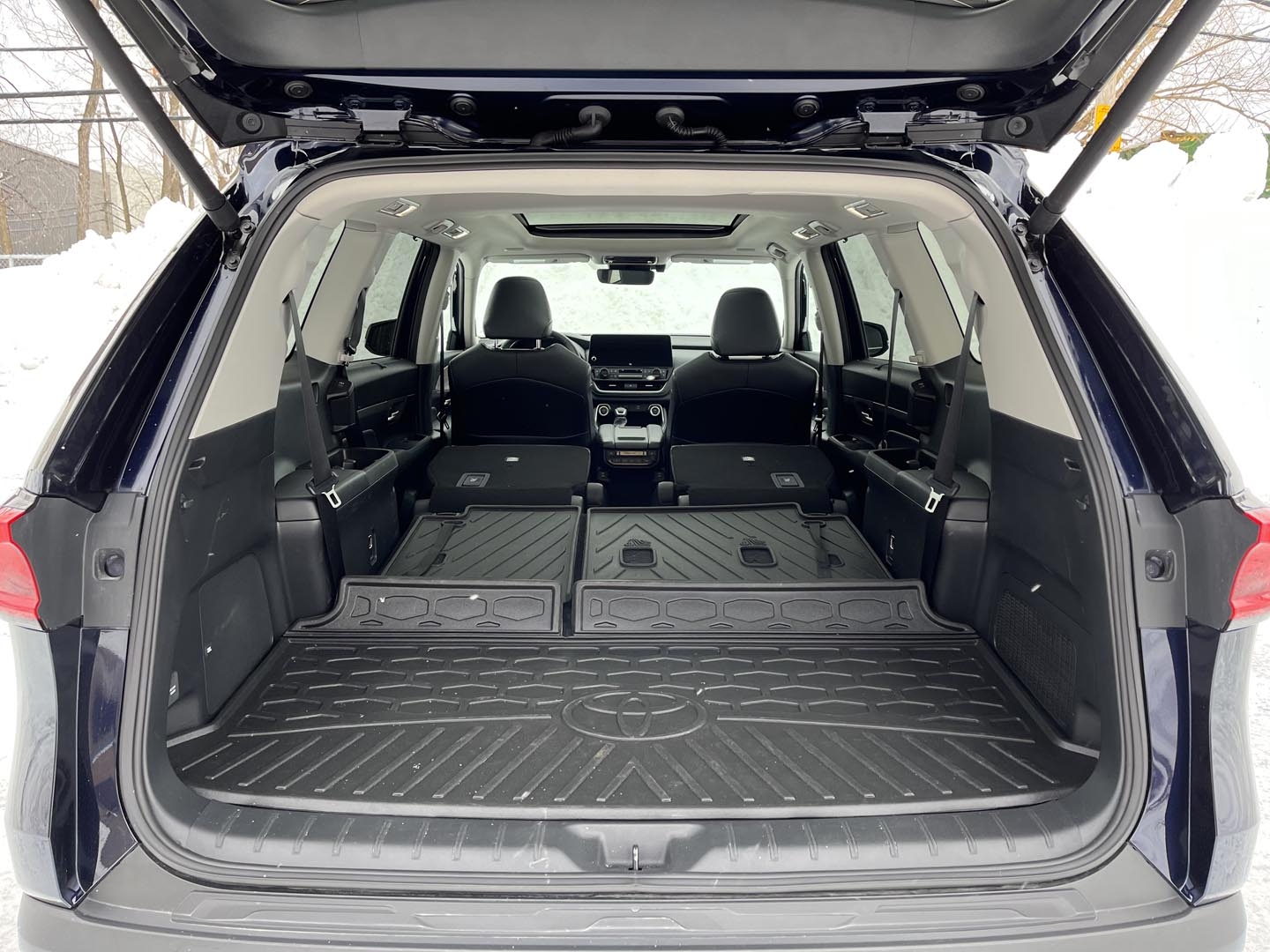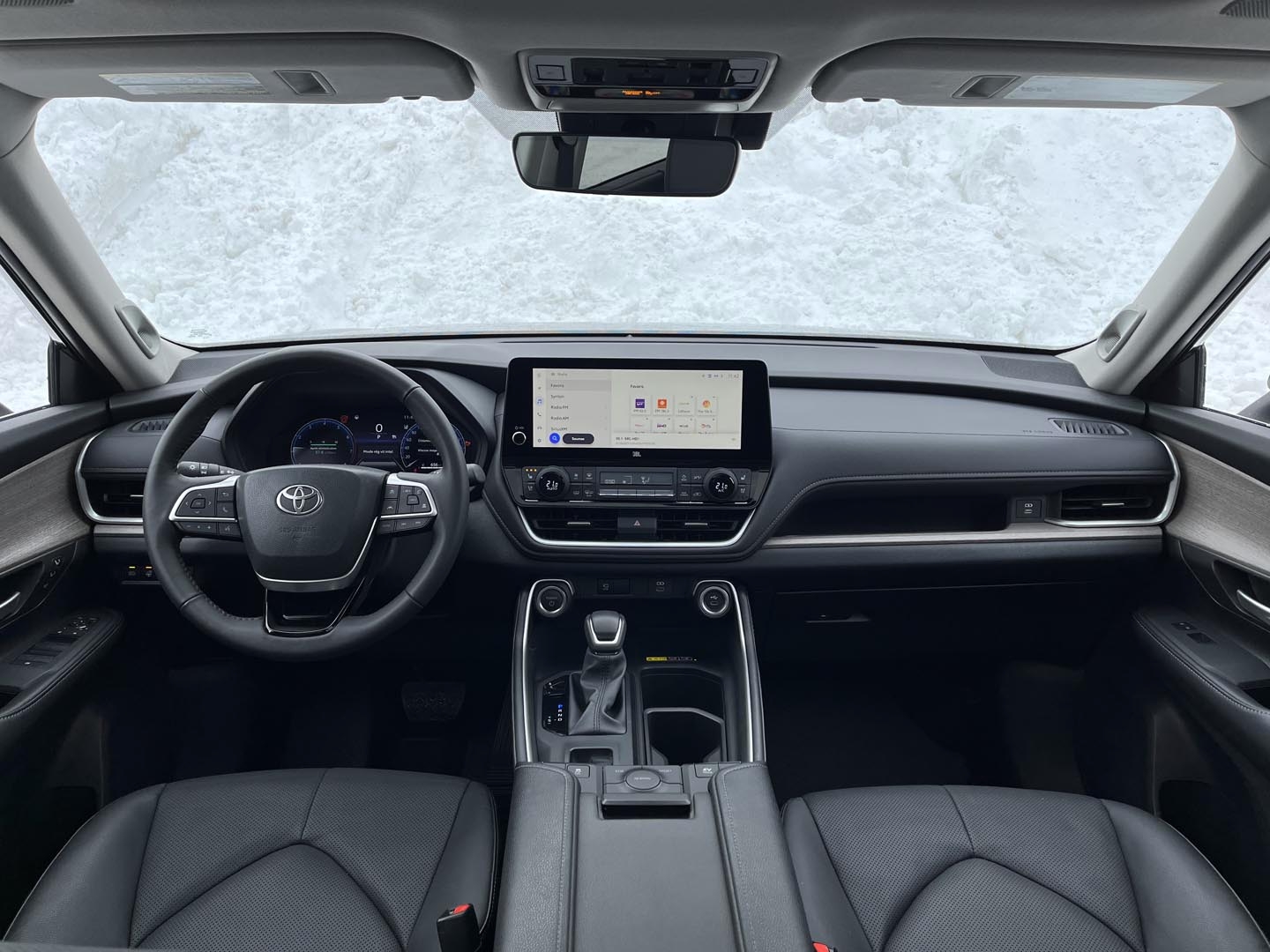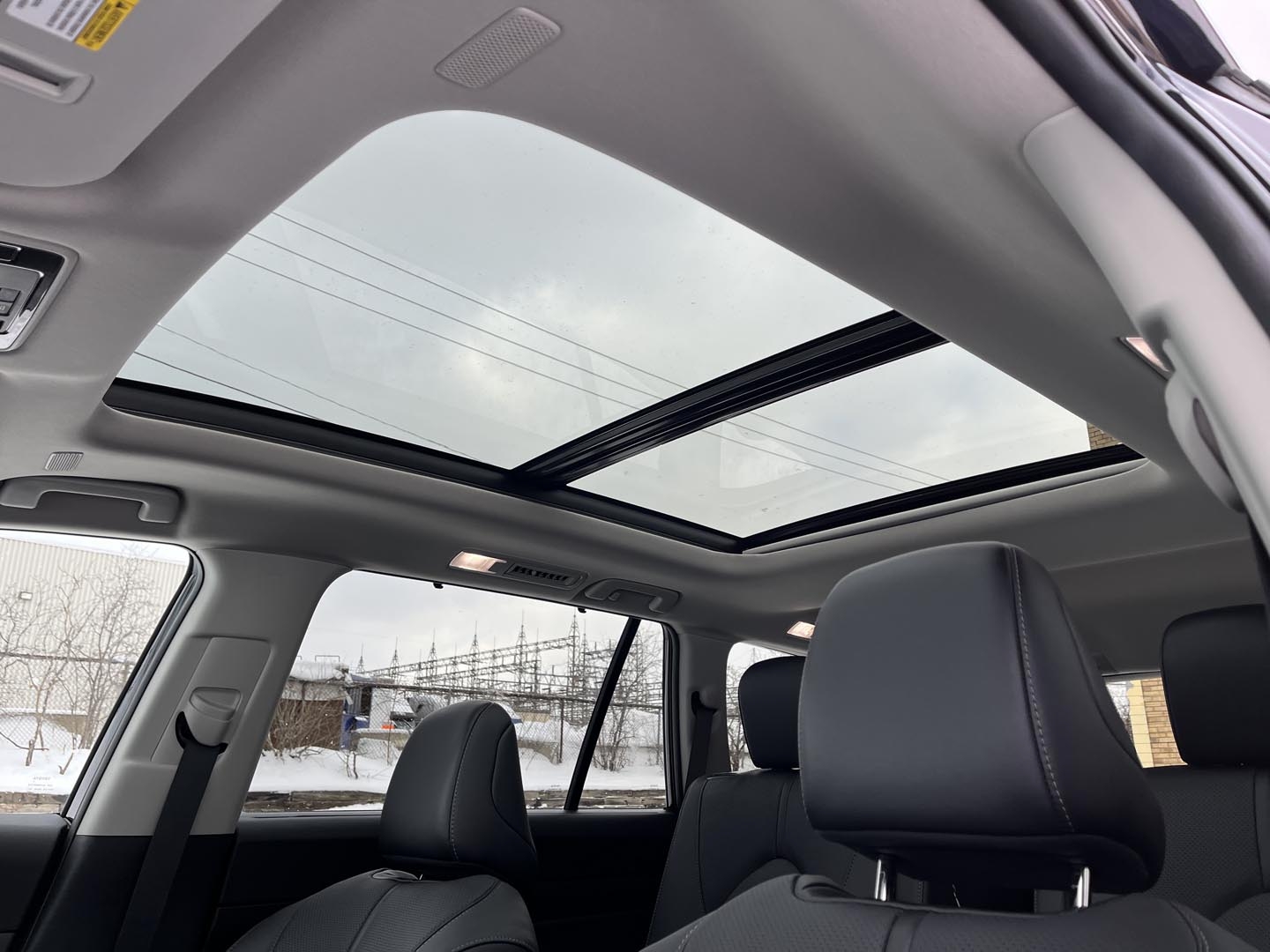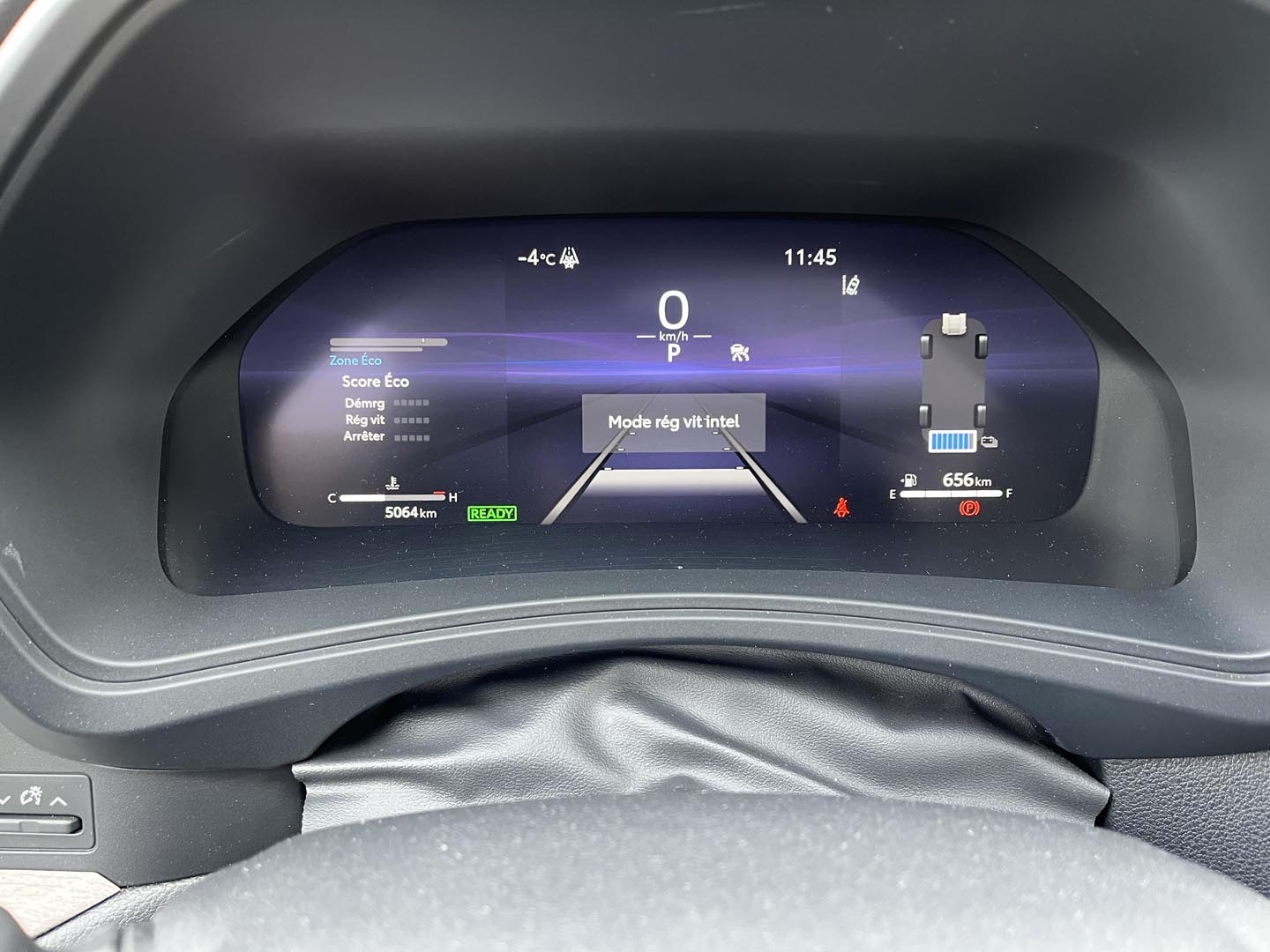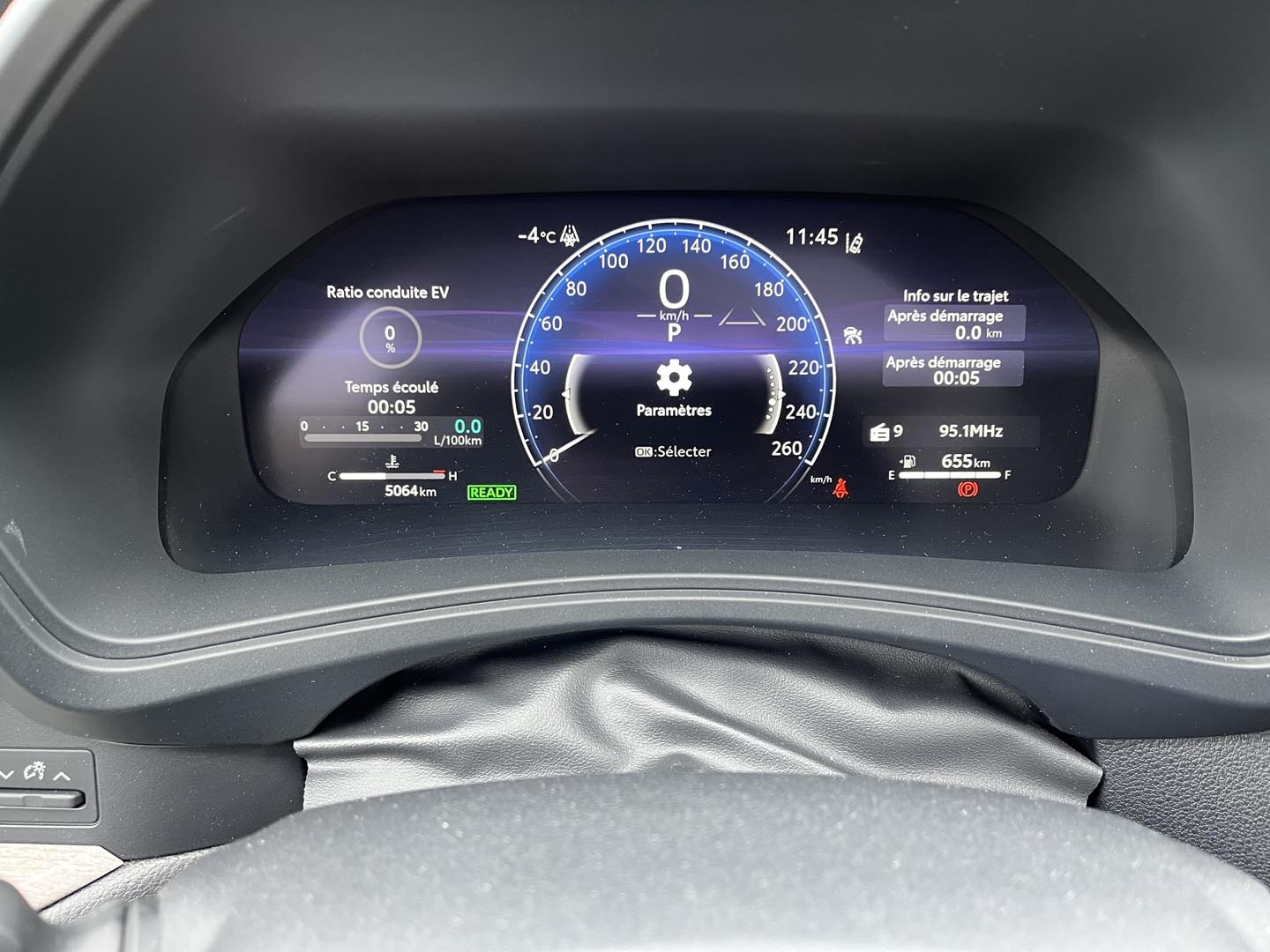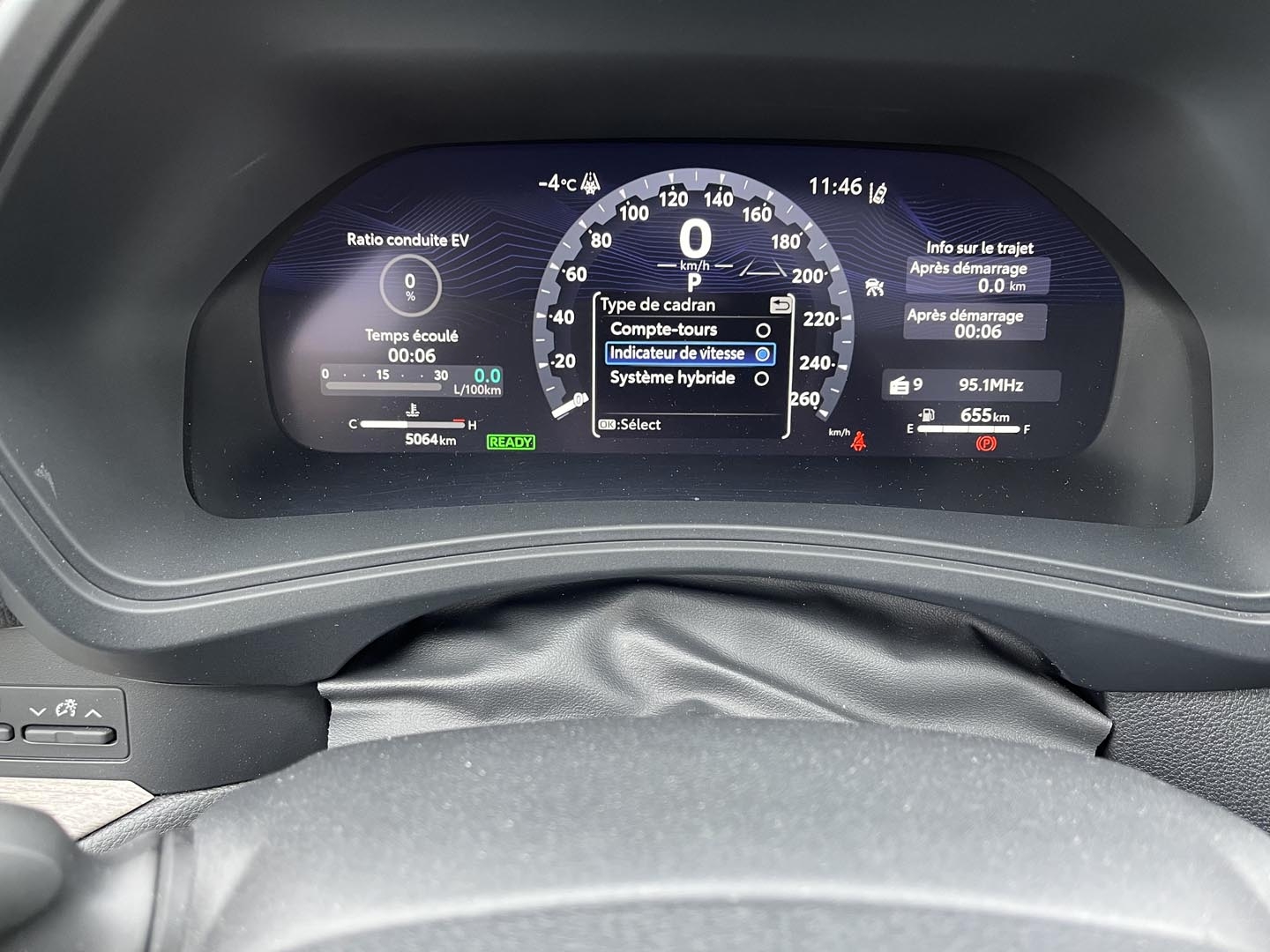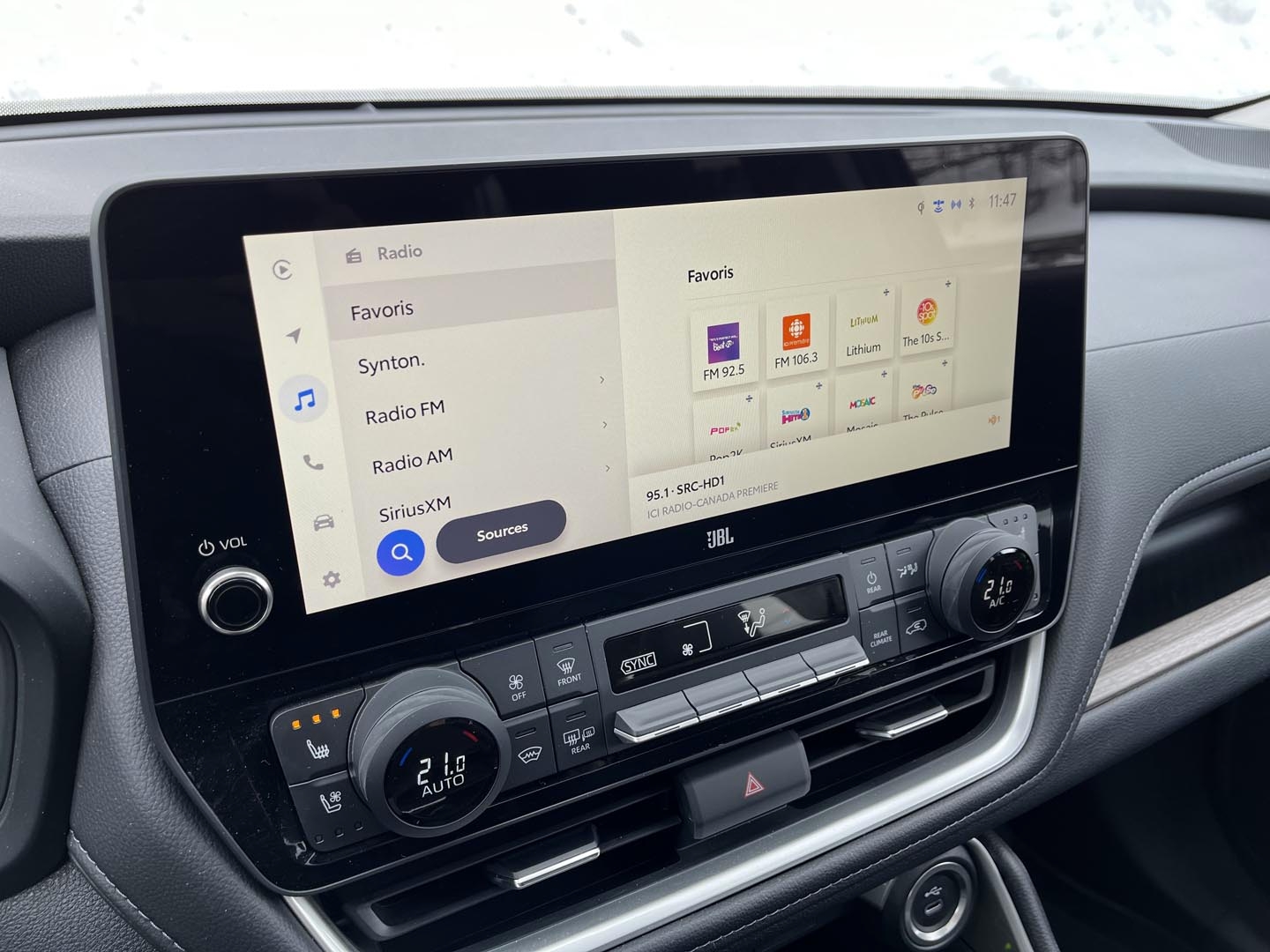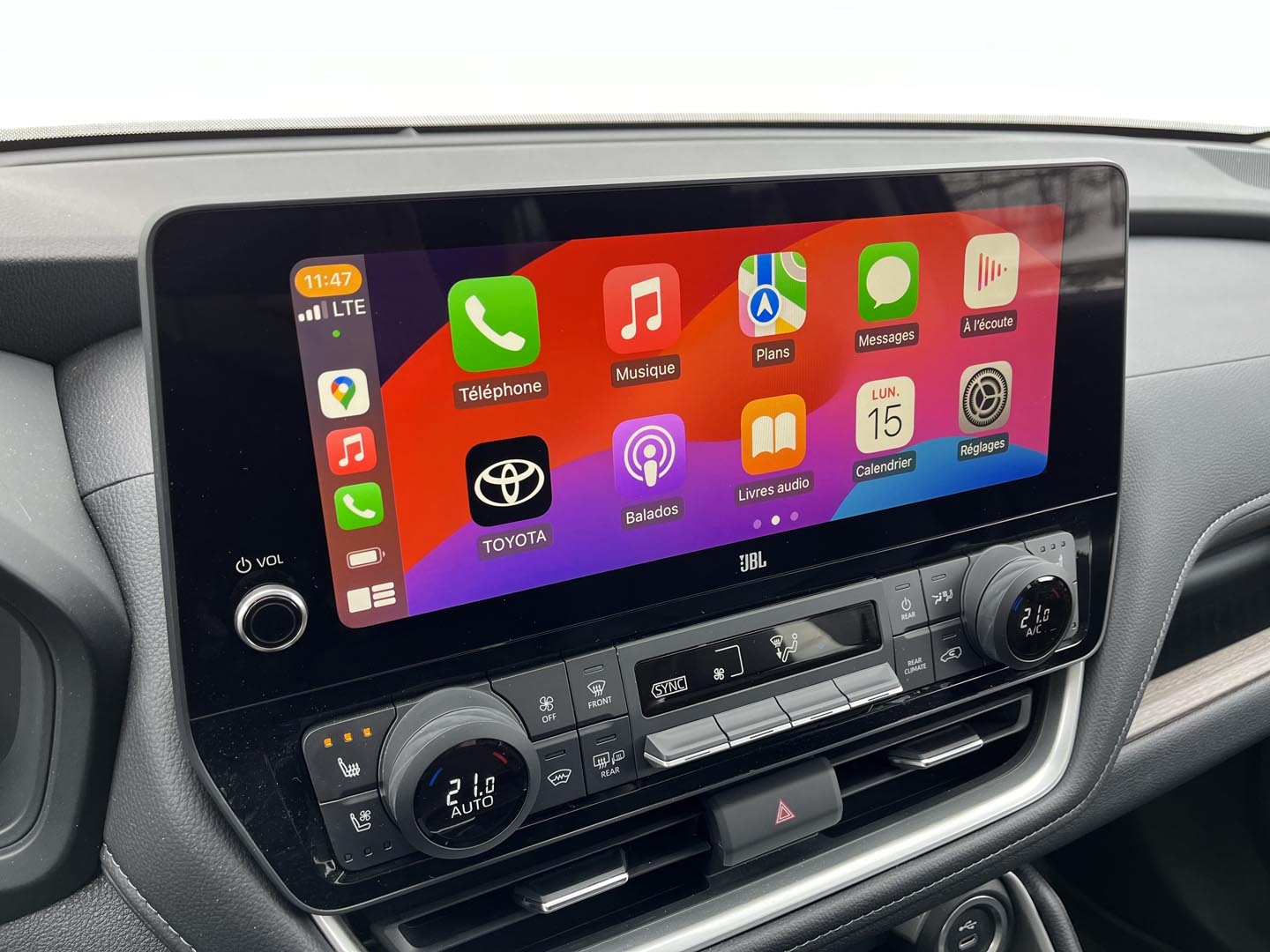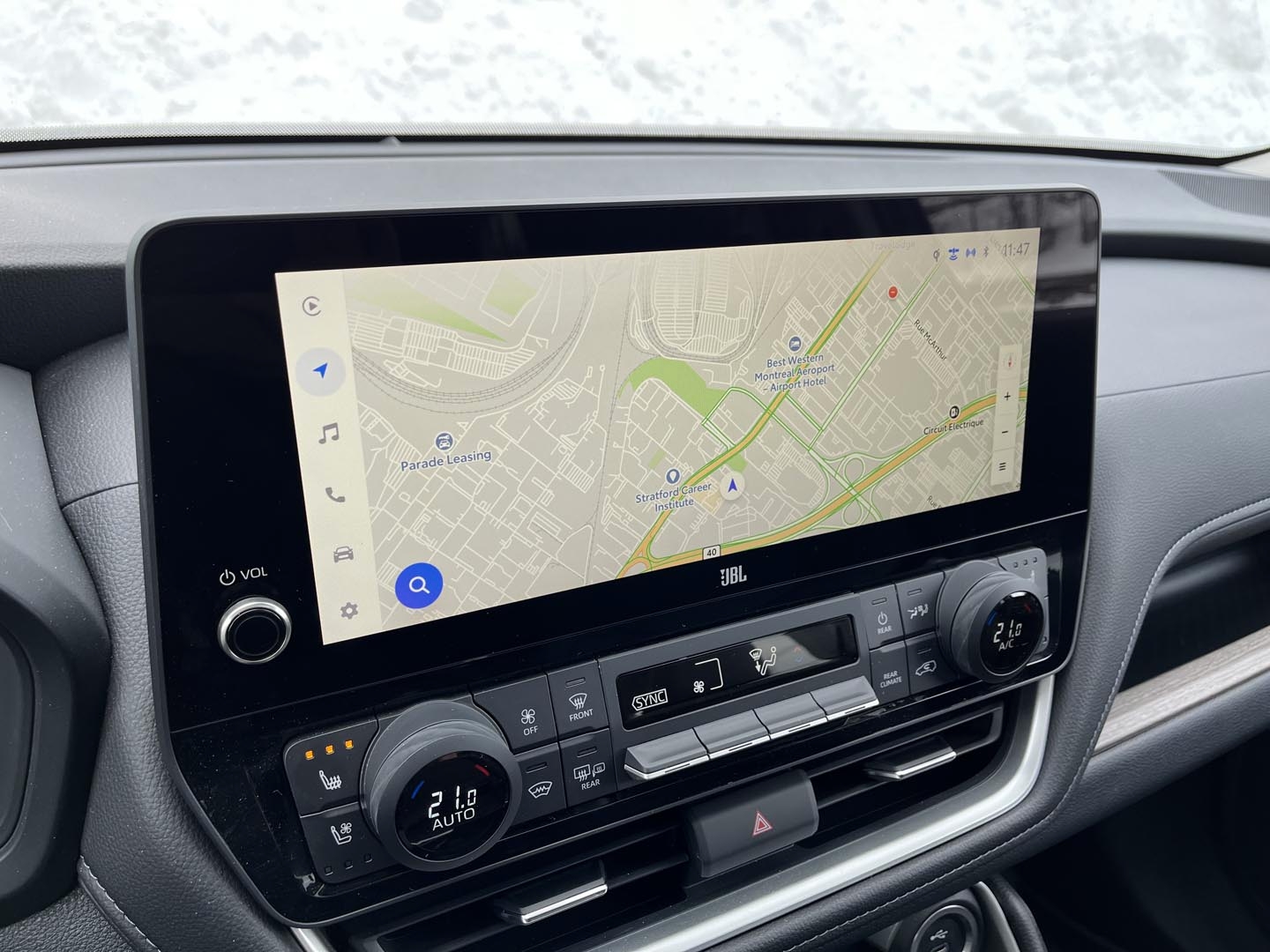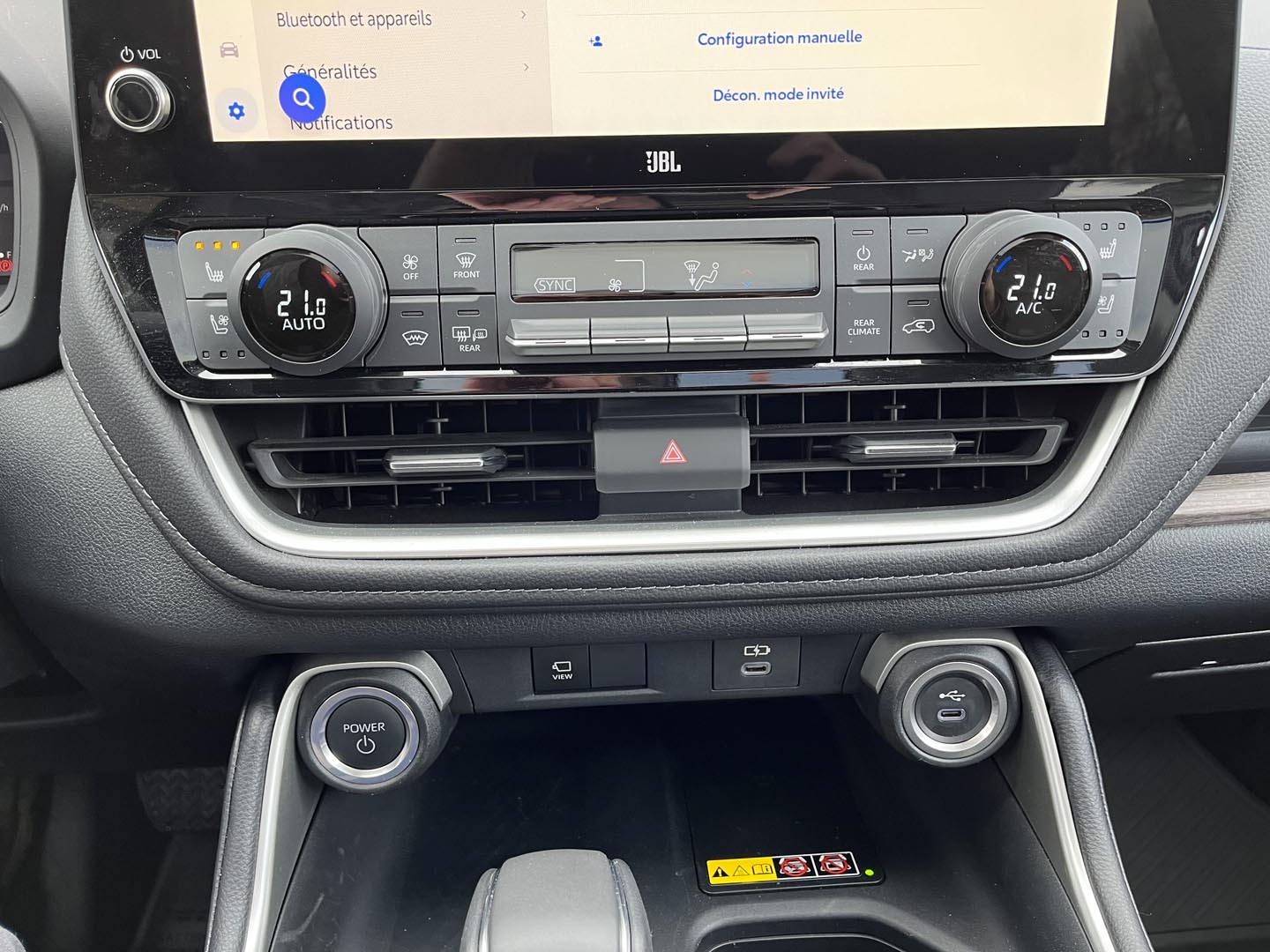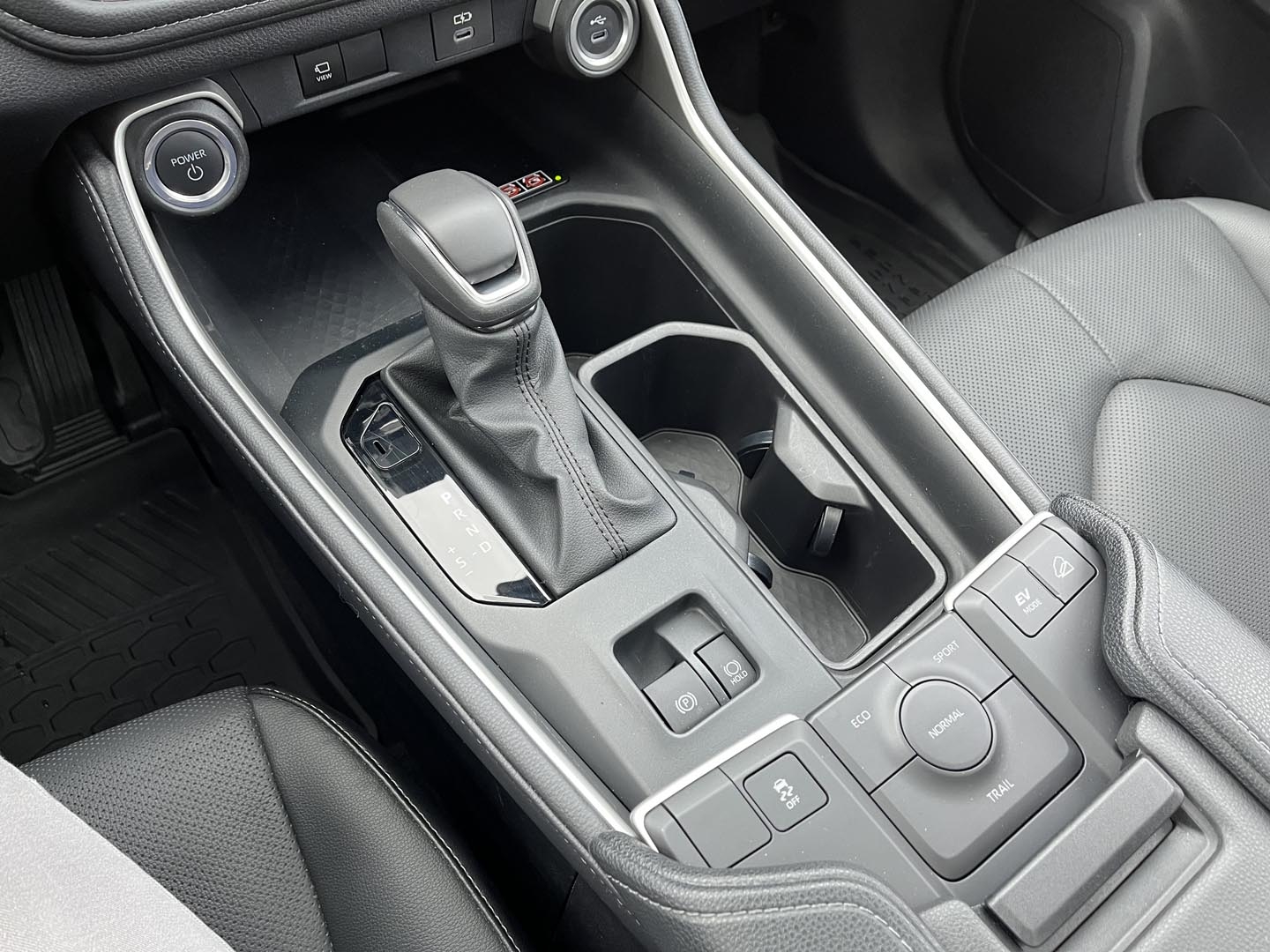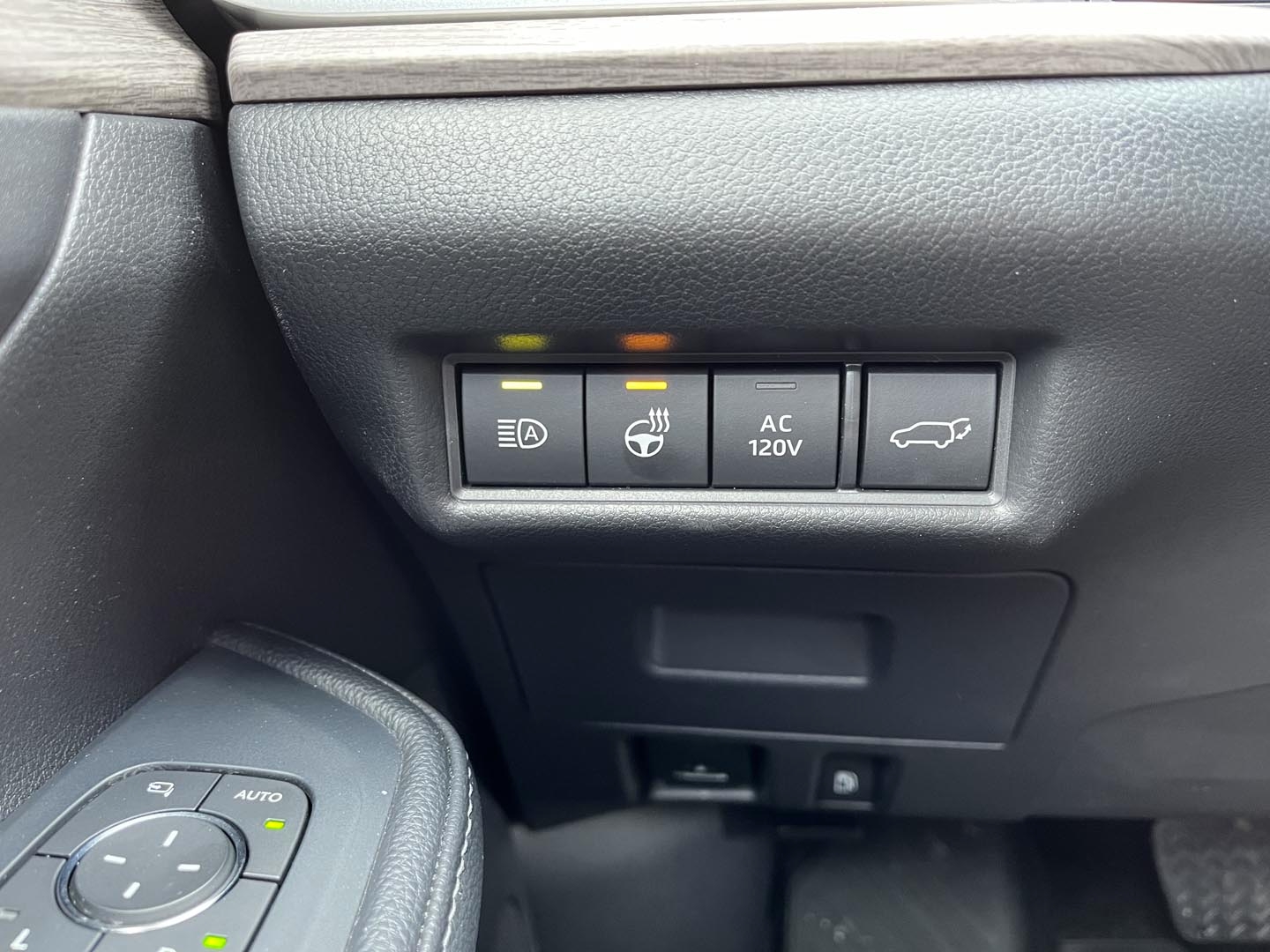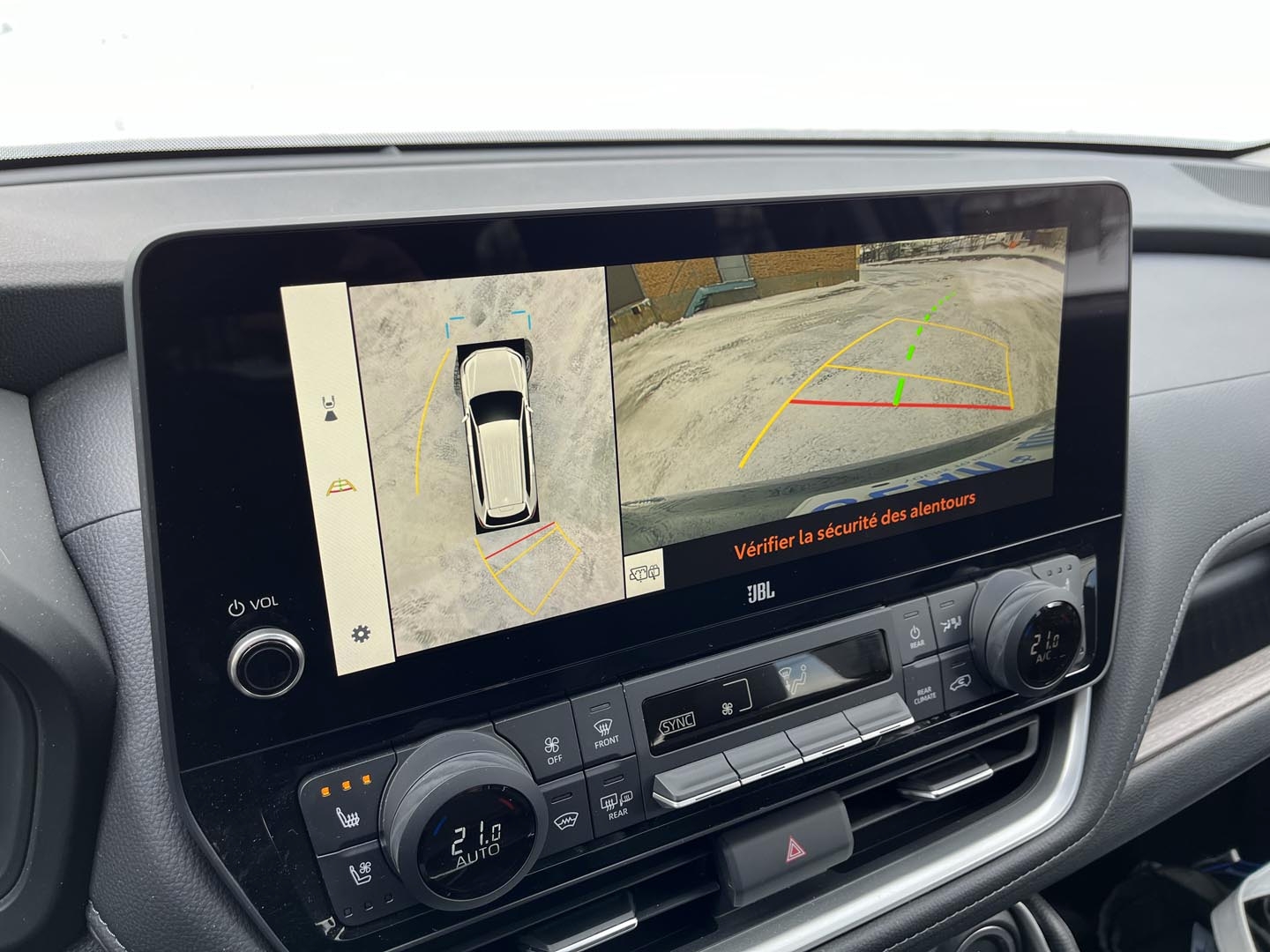
TOYOTA Grand Highlander 2024
Pros and cons
Pros
- Competitive indoor space
- Smooth ride
- Stable driving, even in winter
- Reasonable consumption (hybrid)
- Generally simple controls
Cons
- Noisy hybrid engine
- Steering too light
- Average finish for the price
- Annoying multimedia system
- Low supply (hybrid)
Overview
On the market for almost 25 years, the Toyota Highlander has always been a little smaller than the average of its counterparts. Toyota’s answer: the latest Grand Highlander, which combines the platform and powertrain of its “little brother” with a format closer to that of the most sought-after mid-size SUVs. The Platinum version stands out for its “Hybrid MAX” engine, which draws 362hp from a combination of electric motors and the turbocharged four-cylinder of non-hybrid models. All-wheel drive as well as seven or eight seats come as standard.
Toyota has chosen to market both sizes of Highlander in parallel. As expected, the larger model costs more than the smaller one, but the price difference is surprisingly reasonable.
Priced at $53,319 (including freight, PDI, and dealer fees), the Grand Highlander XLE retails for just $840 more than an equivalent Highlander. The premium stands at $1140 between the two hybrid XLE variants, then peaks at $2640 between the gas-powered Limited models. The $68,279 charged for the Grand Highlander Platinum Hybrid MAX exceeds the price of nearly all SUVs in the segment, apart from the Ford Explorer ST or the high-end versions of the Dodge Durango and Jeep Grand Cherokee L.
Distributed exclusively in Canada and the United States, the Grand Highlander is built in the state of Indiana.
Verdict
The Grand Highlander overcomes much of Toyota’s space deficit in the mid-size SUV segment, without making the Highlander any heavier in terms of handling. Given the small price gap between the two models and their fairly similar fuel consumption, the roomier one makes for a logical choice. However, the noisy engine during acceleration—a common flaw in Toyota hybrids—prevents the Grand Highlander from achieving the same level of refinement as some of its rivals, with the Hyundai Palisade and Kia Telluride leading the way.
Evaluation
Body, cabin and cargo space
With a wheelbase 10cm longer than that of the Highlander, and an extra 16cm in length, the Grand Highlander ranks among today’s largest mid-size SUVs. It is also wider and taller than the Highlander. Unlike the latter, it can realistically accommodate up to six adults.
A very low third row of seats offers virtually no thigh support. Still, it provides much better legroom and headroom than the short-wheelbase Highlander.
The four bucket seats in the first two rows proved more comfortable, although they were a little too short for taller people. The driver enjoys a clear driving position, just high enough for a vehicle of this calibre.
Not unlike the Honda Pilot Trailsport, the Grand Highlander’s finish is somewhat lacklustre for a $60,000 vehicle. Other manufacturers, such as Hyundai, Kia, and Mazda, offer a more welcoming environment for the same price. That said, the assembly is in line with Toyota’s usual quality standards.
The numerous physical controls dedicated to air conditioning, driving modes, and assistance devices uphold another of the automaker’s successful habits. All are within easy reach and intuitive to use, as is the case with the traditional gearshift lever. Spacious, cleverly designed storage compartments with plenty of charging ports further strengthen the SUV’s undeniable practicality.
The biggest drawback lies in the new-generation multimedia system fitted to most recent Toyotas. Although resolutely more modern than the old interface, it requires several interactions to access some of the most common functions. Apple CarPlay and Android Auto save the day a little, and allow you to enjoy the fine sonority of the JBL audio system with greater peace of mind.
Safety
Safety features
- Antilock brakes with electronic brake-force distribution and brake assist
- Stability and traction control
- Hill-start assist
- Hill descent control (standard on Platinum version, not available on others)
- Front airbags
- Driver knee airbag
- Airbag in the passenger seat (to prevent sliding under the seatbelt in the event of a frontal impact)
- Front side airbags
- Side curtain airbags
- Front seatbelts with pretensioners
- Seven or eight adjustable headrests (adjustable for side seats in the first two rows, retractable for other seats)
- Rear-seat bench reminder available
- Backup camera
- Tire pressure monitor
- Forward collision warning
- Front automatic emergency braking with detection of pedestrians, cyclists, and vehicles approaching from the opposite direction at an intersection
- Lane departure alert with automatic steering assist
- Active lane control
- Emergency steering assist
- Auto high beam
- Adaptive cruise control
- Blind-spot monitoring system with automatic steering assist
- Rear cross-traffic alert (with automatic braking on Limited and Platinum)
- Front and rear parking sensors with rear automatic emergency braking and perimeter monitoring system (standard on Limited and Platinum, not available on XLE)
- Front cross-traffic alert (standard on Platinum, not available on other versions)
Crash test results
National Highway Traffic Safety Administration
Overall score: Not tested
Frontal impact: Not tested
Side impact: Not tested
Rollover resistance: Not tested
Insurance Institute For Highway Safety
Moderate overlap frontal impact: 4 / 4
Small overlap frontal impact: 3 / 4
Side impact: 4 / 4
Rear impact: Not tested
Roof strength: Not tested
Visibility
With its wide window area and near-horizontal sills, the Grand Highlander boasts great all-around visibility for a large SUV. The wide B-pillar slightly hinders lane changes, but the blind-spot monitoring system comes in handy. The surround-view system makes parking easier, however, the cameras need to be constantly cleaned in winter.
Headlights: LED headlamps achieved a 3 out of 4 rating from the Insurance Institute for Highway Safety. While they illuminate a good distance in low-beam mode, their performance in high-beam mode falls slightly short of the organization’s targets on both straight lines and tight bends.
Mechanical overview
Up to about halfway through the vehicle, the mechanical innards of the Grand Highlander closely mirror those of the regular Highlander. Toyota has, however, strengthened the structure and modified the rear suspension to better accommodate the new model’s increased size. This “beefing-up” results in a reasonable weight increase, ranging from 30 to 50kg depending on the version.
The catalogue features a trio of four-cylinder engines. Identical to the “little” Highlander, the former draws 265 horsepower from its 2.4-litre displacement with the help of a turbocharger. That’s 30 horsepower less than the V6 it replaces; on the upside, the four-cylinder delivers almost 50 additional lb-ft of torque, for a total of 310.
This engine is combined with an eight-speed automatic transmission and an all-wheel drive with a conventional driveshaft. The front wheels pull the vehicle most of the time, while the rear axle is activated for acceleration or in case of loss of grip. Torque distribution can also be varied between each of the wheels on this axle.
The XLE and Limited hybrid models share the same combination of a 2.5-litre four-cylinder, a nickel-metal-hydride battery and three electric motors as the other large Toyotas. Altogether, this arrangement produces 243 horsepower, which is transmitted by an electronically controlled continuously variable transmission.
And this time, it’s an electric motor dedicated to the rear axle that drives it when conditions require. Up to 80% of the driving force deployed at any given moment can be used to power the rear wheels, although under normal driving conditions the front wheels are still in charge.
The Platinum Hybrid MAX version sets itself apart from all other Highlanders by combining the aforementioned turbocharged four-cylinder with an electric powertrain. The result is a combined output of 362hp and maximum torque of 400lb-ft, bringing the Grand Highlander closer to powerful rivals such as the Ford Explorer ST.
The supporting six-speed transmission sends power to the front wheels, while an electric motor takes care of the rear axle. At least 30% of the torque is always directed to the rear, making this system a permanent all-wheel drive.
The official fuel consumption ratings for the Grand Highlander are barely above those of the Highlander. Natural Resources Canada reports a city/highway average of 7L/100km for the Limited Hybrid version we tested. However, we actually measured 9.5L/100km in a test conducted in the middle of January, a figure almost identical to the result obtained behind the wheel of a V6 Highlander in the spring of 2021. By comparison, a Highlander hybrid driven in July consumed 7L/100km.
Driving impressions
If you’ve ever driven a current-generation Highlander or Sienna, you’ll be on familiar ground behind the wheel of the Grand Highlander.
The soft suspension settings provide good comfort on bumpy roads, despite the presence of low-profile 20-inch tires on our Limited test model. This suppleness occasionally results in some rear-end bounce, but the damping is sufficient to guarantee good stability at cruising speed.
As a result, the Grand Highlander displays good handling, significantly better than that of a Toyota RAV4 Trail tested just before, but not as steady as that of a Mazda CX-90 or Ford Explorer. The lightness of the steering isolates the driver from the road and makes cornering a mundane affair, without undermining the predictability of the ride.
Besides, the vehicle proved safe during a Québec-Montréal itinerary punctuated by strong crosswinds and sustained snowfall that made the road slippery. The electronic all-wheel drive reacted faster and more accurately than what Toyota had accustomed us to with its conventional system.
The hybrid engine is very well adapted to the vehicle, even when quite heavily loaded. Both initial acceleration and highway entry are carried out with ease, bolstered by a transmission that adjusts to the slightest movement of the right foot. Alas, Toyota has not yet succeeded in erasing the noisy, grumbling nature of this assembly, except at steady speed.
This detracts from the Grand Highlander’s refinement, and since the brand’s excellent V6 is not included in the catalogue, one must turn to other models like the Honda Pilot, Hyundai Palisade, and Kia Telluride to enjoy the smoothness provided by such engines.
Other highlights
Braking: improved transition between regenerative and mechanical braking, but the pedal is still difficult to modulate at start-up. Adequate overall power during emergency stops, made possible by large, ventilated discs at all four wheels. The antilock braking system intervenes rarely, but judiciously, on slippery roads.
Driving assistance: both the lane departure alert and the adaptive cruise control are overly cautious, which might prompt users to quickly deactivate them. Fortunately, Toyota still offers the option of conventional cruise control by pressing and holding the start-stop button. A new proactive driving assistance system intervenes on the brakes and steering to, for example, maintain distance from the vehicle in front or slow down in bends, even when the adaptive cruise control is not activated. At times disconcerting, this system can also be deactivated.
